#and build lasting self-love. Through powerful storytelling and practical tools
Text
youtube
#You Can't Eat Love#Embracing Emotions and Cultivating Self-Love with Leslie Davis | KAJ Masterclass LIVE Are you struggling with self-acceptance#emotional eating#or unhealthy relationships? Join Leslie Davis#inspirational speaker and best-selling author of as she guides you on a transformative journey of personal growth and self-discovery. With#authenticity#and hard-won wisdom#Leslie empowers audiences to embrace their emotions#practice self-compassion#and build lasting self-love. Through powerful storytelling and practical tools#she'll help you break free from limiting beliefs#set healthy boundaries#and cultivate the unshakable confidence to live your best life. Get ready to be inspired and equipped to make lasting positive changes.#contact us at: [email protected]
**Book host KAJ for speaking engagements#coaching sessions#and more: https://www.thekajmasterclass.live/book-online**#Youtube
0 notes
Text
Hymn on the Wind
Tav x Gale
Warning: bg3 act 2 spoilers, original poetry
Under the cut is a spicy ending for people who want. CW: oral sex, sexual situations, it's basically a blow job how to if you're looking for tips, I'm very good at it.
Part 3
Rythmn of Us
Tav peaked out of her tent. When she spotted Gale, she jogged over to him, then slowed down, attempting to act casual as she approached. He was looking over the map they'd been building of the cursed lands..
After Gale had created a beautiful night for Tav two nights ago, he'd confessed his love for her. She told Gale she loved him too. The next day her and Karlach decided they needed to get to the creche as Lae'zel insisted.
It was the thinnest excuse for an adventure in history. Of course, Tav wanted to go to the creche, but she also wanted to extend the time she had with Gale. The last time they'd talked about the b-o-m-b issue, he seemed resigned to his fate. But Tav had promised herself and her companions that she would save Gale, if even from his own self-hate.
Gale had smiled and nodded at the news of going to the creche as he normally did when Tav made a decision, but Gale was far too smart for Tav to imagine she'd fooled him.
"Gale, can I show you something?" Tav asked.
"If it's your own magic trick again, I'll remind you that you lost my favorite hat in a fire." Gale said. He straightened from the map to turn towards her approach. Gale smiled at seeing Tav. "Of course, I'll come, my love. Lead the way."
Tav slipped her hand in his hand as she smiled at Gale. Tav convinced Astarion, Wyll, and Lae'zel to go for supplies and do more scouting of the large temple they'd found that day.
As Tav pulled Gale into her tent, Tav was bubbling with excitement.
"I can't wait to see this, you're so excited." Gale said. Gale's eyes were bright and hopeful, just a dash of concern. He loved Tav, and she could feel it ripple through her when he spoke sweetly.
Tav had set her tent up next to a stone wall, which they'd killed some undead when they first arrived. The land against the wall was flat and slightly elevated and wide enough for a makeshift bed. It would offer them extra privacy and some comfort.
Tav had lit a few candles and borrowed an incense stick from Shadowheart that smelled of the kind of oak wood found in libraries. She wanted everything to be perfect.
Tav walked over to the music box where she had it with her lute and an unopened bottle of wine.
"I found this at the old house of healing a few days ago. It was on a hearth, it reminded me of my mother. I don't know why I took it, it's not valuable and it'll only take up space."
"You'll keep it for the same reason we keep every scrap of paper we find," Gale said.
"You've given it meaning." Gale reached his hand for the box, pausing before touching it. "May I?"
"Yes," Tav said.
Gale lifted the small box with care. He turned it in his hands, viewing the craftsmanship and the detailing. As a wizard from wealth, Gale was practiced at handling crumbling tomes and powerful artifacts. It warmed Tav's heart that he used the same care for a music box with faded paint and looked as if it was made with dull tools. All because she said it was special to her.
"When I saw it it reminded me of one she had. She said my father gave it to her, but who knows, she told so many stories."
"You don't talk much of them," Gale observed. "I imagine it's painful."
"She told me that she was everything he wanted her to be, she changed herself a thousand ways for him. Still, he hurt her. He's dead now, I don't care why."
"I asked her why she kept something that held such bad memories," Tav continued the story she'd been telling.
"And what did she say?" Gale asked. He raised a brow, aware he was being told a story. For Tav, storytelling was all around her. She brought Gale into her story. She'd introduced him to the characters, explained the jokes, and then made him a main returning lead when they'd fallen in love.
"She told me that the box didn't hold bad memories. It held music and treasures. The scars he left and his corpse, that's where the bad memories lived." Tav said. "She said, "He doesn't get the music."
"There is wisdom in her words." Gale said in his soft way. He handed Tav the music box.
"I know you've said all you will on the subject," Tav felt a tightness form in her throat at bringing up the unhappy subject. "And that's fine," she saw him take a breath as if settling himself from a surge of emotions. He watched her steadily, trusting her.
"I know Mystra is magic, but music and storytelling is my magic. And it's outside of her domain. I had trouble finding the words. I even thought of writing a song about the unethical nature of bombs, but I give Astarion and Karlach so many explosives." She said this last bit as if it was something even she found worrying.
Gale chuckled and Tav felt a warmth knowing she'd made him happy.
Tav turned the key in the music box and set it down.
"That's the song you've been playing," Gale noted.
"Yes, I've been practicing," She said proudly. She set the leather strap of her lute over her shoulder.
The soft tune that had struck her when she first heard it rose between them, surrounding them with its melody.
"Music is my domain and she can't have it. So no songs to convince, only songs about love."
Gale rested his arms across his chest, his right hand settling on his lips. He smiled amused at her words and brave defiance.
She plucked at the strings building the score she added to the music box music. They blended and created a slightly upbeat rhythm that she could shift up or down in tempo as the moods of the song shifted from romance to humor.
"Your name in the wind,
You're magic on my skin.
We both love wine and art,
You're the song inside my heart."
Gale laughed, smiling warmly.
"Each day starts anew,
With thoughts of love for you.
Scratch, Quoth, and owlbear Ol-lie,
We make a great adventuring par-ty."
She repeated the music for the verse adding some deep notes that reverberated in her lute. Then she moved to the last verse.
"The world will be scary,
We know things get hairy.
With your power, the stars we'll see,
Dancing to the rhythm of you and me.
Dancing to the rhythm of you and me.
Dancing to the rhythm of us."
She ended with a big flourish. Tav hadn't been so nervous to perform in years. Her face was hot but she smiled because she had fun singing and playing.
Gale clapped his hands laughing. "To think I once dabbled in poetry," Gale said. His eyes pools of love for Tav.
Tav set her lute down. The music box notes tinkled softly before the key wound down. She stepped closer to Gale, and he immediately pulled her into a hug.
Gale leaned back from the hug, keeping her held close. "You wrote that for me?" He set his hand on his chest.
Tav knew the orb lived there, the thing that would take him from her. But Gale was so much more than that orb. He was there first.
"I've never had anyone write something for me," he said. "The last bard I woo'd left before I'd finished pouring the wine."
"Gale, if you tell me about one more person, god, or fae who's been mean to you, I'm going to start hunting people." Tav said with fake annoyance.
"I'm sorry, my love," Gale said, earnest in his apology.
Tav hugged Gale tightly, her arms around his neck.
"You can tell me everything, Gale," Tav said. "I just get mad when I know someone's hurt you. You're so sweet."
"I've been known to be a bastard from time to time," Gale said with a wry grin.
"I don't believe it," Tav said, smiling up at Gale. She had no delusions that Gale was a saint. But she loved to joke and play with him.
"Thank you, for your gift," Gale said. He brushed Tav's cheek with the back of his fingers. "I can't imagine what I've done to deserve it."
"You've been here for me, and the others. We're in this together which means we stay together." Tav said.
Gale's eyes fell with the weight of his choice. They both knew that she was referring to what Mystra asked of him. Tav worried that if Gale thought she was just trying to manipulate him, he'd reject her gift and his chance to live.
"I know it worries you," Gale said, his eye met hers again. "I know that your gesture was made with kindness. So, I will treasure it."
"I love you, Gale," Tav said. She felt the familiar rush of love that blossomed whenever she spoke those words to him.
Gale smiled, cradling Tav's face gently. "I love you, my beautiful Tav."
Tav and Gale kissed. She expected his kiss to remain gentle but it was more passionate. She leaned into it, rubbing the back of Gale's neck with her hand. When they broke apart, Tav was breathless and her knees felt unstable.
"I'm glad you like it." Tav said. She rested her nose against his. "Astarion suggest a cross between a massage and torture I think."
"I'm glad you listened to your instincts then," Gale said with a disgruntled head shake. He leaned in to kiss Tav again. She could feel the smile on his lips.
The heat in her belly was already spreading over her body. She wanted Gale. She wanted to feel his hands on her skin, she wanted to live only in the moments where they were making each other feel good.
She could tell from how he moaned low in his throat and his hands had begun to wonder that he wanted her to.
Tav and Gale's passion grew. He kissed her neck, kissing over her ear softly. "Will you sing more for me, my love." His hand slid between her legs and Tav's breath caught.
She backed up and guided him to the bed. She gestured for him to sit on the step she'd made into the bed.
"My love, let me return the favor of your gift," he held onto her hips as she stood over him. He kissed her tummy.
"You asked me to sing," Tav knelt between Gale's knees. "I know this special bard throat technique I can show you."
Gale's face was red with a mixture of excitement and embarrassment. He was still growing used to be desired.
"I wouldn't dream of interrupting an artist during a performance," Gale said.
Tav kissed his lips softly. "You just sit back and be my muse." She had already started undoing his pants.
Gale hummed her tune absently and she could only hope her words got through.
The last time they'd made love, Gale asked Tav questions about her pleasure. He studied her body and even shared his own desires.
Tav pulled Gale from his pants. She opened her shirt, unclasping her bra the way he liked it. Gale liked when her breasts peaked out but were covered enough that he could touch and expose them when he wanted.
Tav stroked Gale with one hand while her other cradled his balls. He pulled her face to his, kissing her while she touched him. Tav started humming the tune of the bard throat trick. It was a low octave, but Tav was practiced. She separated from Gale, giving him a loving look while he gazed at her with warm brown eyes.
She slid her mouth over his sex softly caressing the head with her mouth. Tav filled her mouth with saliva then pushed down over Gale's cock taking in more than half his length. She felt him grow and throb as she hummed her song. His hand squeezed her breast while she pleasured him, his other hand touching her head.
Tav felt Gale grow big in her mouth as his pleasure built.
"My love," she heard Gale whisper close to her ear. "You're doing amazing things but I need to taste you too."
Tav stood up while Gale moved pillows around. She took off her clothes, laying them to the side. Gale laid on his back with a mischievous smile. She kneeled on either side of his head, leaning over him. She hadn't ceased her song but she'd have to rebuild the rhythm she'd been working on.
Gale pulled her against his mouth, his fingers already rubbing her clit. She felt her arousal building from his work. A warm tingling where her skin met his.
Tav used her mouth up and down his shaft again, humming around him. Gale slid his fingers into her, his tongue lapping at her sex.
With steadily increasing speed her head bobbed up and down. Her free hand massage just under his balls. Tav pushed the head of his cock deeper into her throat a few times in time with the notes which made it feel amazing. She heard Gale moan as she squeezed him with his throat, his hand grabbing her ass.
She felt Gale's pleasure building against her lips. He was pulling her clit into his mouth and she felt she wasn't far behind him. He used his hand to move her hips and she realized he wanted her to ride his face. Tav rolled her hips, arching her back. Gale's tongue wiggled against her clit and it sent her over the edge. She tried to maintain rhythm, but her orgasm crashed through her like waves during a storm. Having Gale in her mouth, pushed deep in her throat only made it more intense. He held her in place so he could continue to push her pleasure. Tav was too euphoric to do much but nurse on Gale's cock as his warm cum poured into her.
Tav's body trembled as she released Gale from her lips, aware a penis can be tender after. He licked between her legs as she laid exhausted on top of him, her head against his thigh.
When Gale was satisfied, Tav felt a last gentle kiss. "Come rest your head with me, my love."
Gale wiped his face off on a towel before discarding it. She lay next to him, her head on his chest while his arm held her close.
"The "bard throat trick", huh?" Gale said with a cheeky smile. "Never thought I'd mark that off the bucket list."
"I hope it's a long list," Tav said wistfully.
"Remember what Elminster said about fate breaking on the rocks of will," Gale said. His words were quiet, serious. "If any will were sturdy enough and full of enough love to defy what seems inevitable it would be your will, my love."
Gale softly hummed Tav's song, his fingers running over her skin. His eyes were closed, his head moving side to side at the funny bits.Tav watched him from his shoulder, wanting to remember his face, his smell, his voice. She was hopelessly in love and desperate to save Gale, but for now, she had these moments of quiet and comfort.
#bg3#baldur's gate 3#bg3 gale#bg3 gale x tav#gale x tav#bg3 fanfiction#bg3 romance#fanfic#bg3 fanfic#spicy content#this man is in my brain now he's in yours#bard throat trick to drain out the soul and make it yours#gale dekarios#gale of waterdeep
27 notes
·
View notes
Text
The Family That Reads Together: Nurturing Bonds and Building Futures
In a world buzzing with technology and distractions, the simple act of gathering as a family to read holds immense power. Family reading time is more than just flipping pages; it's about creating lasting connections, fostering empathy, and igniting a passion for knowledge. In this exploration, we uncover the importance of family reading, share strategies for making it meaningful, and celebrate its profound impact on familial relationships and individual development.
Embracing the Essence of Family Reading
Family reading time transcends the boundaries of age and background, serving as a cornerstone of shared experiences and cherished memories. It is a time to escape into the realms of imagination, explore new worlds, and connect with loved ones on a deeper level. From the tender moments of cuddling with a picture book to the lively discussions sparked by a captivating novel, family reading time lays the groundwork for a lifetime of intellectual curiosity and emotional intimacy.
Family reading time is a celebration of storytelling—the ancient art of passing down knowledge, wisdom, and cultural heritage from one generation to the next. Through books, families embark on journeys of discovery, empathy, and self-reflection, weaving together the threads of their collective identity and shaping the narratives of their shared history.
Practical Strategies for Meaningful Family Reading
Creating an enriching family reading experience requires intentionality, creativity, and a spirit of adventure. Here are some practical strategies to infuse your family reading time with joy, connection, and discovery:
1. Build a Diverse Library: Curate a collection of books that reflects your family members' diverse interests, backgrounds, and ages. From classic tales to contemporary favorites, ensure that there is something for everyone to enjoy.
2. Follow the Child's Lead: Let children choose books that pique their interest and capture their imagination. Empower them to explore different genres, authors, and themes and honor their choices with enthusiasm and curiosity.
3. Create a Cozy Reading Nook: Designate a comfortable space in your home—a cozy corner, a sunlit window seat, or a blanket fort—where the family can gather to read together. Fill the space with soft pillows, warm blankets, and shelves of beloved books, creating an inviting atmosphere that beckons exploration and relaxation.
4. Establish Rituals and Routines: Set aside dedicated time each day or week for family reading, whether before bedtime, after dinner, or during lazy Sunday afternoons. Establishing consistent rituals and routines helps to create a sense of anticipation and familiarity, making family reading time a cherished tradition for years to come.
5. Encourage Active Engagement: Encourage active engagement with the text by asking open-ended questions, making predictions, and encouraging children to share their thoughts and reactions. Create opportunities for dialogue, debate, and imaginative play, allowing family members to connect with the story on a deeper level.
6. Extend the Experience Beyond the Page: Bring the stories to life by incorporating related activities and experiences into your family reading time. Whether it's cooking a meal inspired by a story, embarking on a nature walk to explore themes of a book, or creating artwork inspired by illustrations, allow children to engage with the text in meaningful and multisensory ways.
7. Embrace Technology Mindfully: While traditional books hold a unique charm, don't hesitate to embrace digital resources such as e-books, audiobooks, and interactive storytelling apps. These tools can enhance accessibility, provide new avenues for exploration, and complement the family reading experience in exciting ways.
The Enduring Impact of Family Reading
The benefits of family reading extend far beyond the immediate pleasures of shared storytelling, shaping the course of individual development and family dynamics in profound ways. Consider the enduring impact of family reading on familial relationships and personal growth:
1. Strengthened Bonds and Emotional Resilience: Family reading time creates opportunities for intimacy, connection, and shared experiences, strengthening the bonds between family members. Through reading together, families cultivate empathy, emotional resilience, and a sense of belonging that weathers the storms of life.
2. Promotion of Literacy and Academic Success: Exposure to books from an early age lays the groundwork for strong literacy skills and academic success. Children who grow up in reading-rich environments are likelier to excel in school, develop advanced language abilities, and become lifelong learners.
3. Cultivation of Empathy and Understanding: Stories have the power to transport us into the lives and experiences of others, fostering empathy, compassion, and understanding. Through exposure to diverse characters and perspectives, family members learn to appreciate differences, celebrate diversity, and navigate the complexities of human relationships with grace and empathy.
4. Fostering a Love for Learning: Family reading time instills children's lifelong love for learning and exploration. By associating reading with joy, connection, and discovery, families cultivate a positive attitude toward education that extends far beyond the pages of a book.
5. Creating Lasting Memories and Traditions: Family reading time creates cherished memories and traditions that endure across generations. From the laughter shared over a funny picture book to the tears shed over a poignant novel, these shared experiences become woven into the fabric of family lore, shaping the narratives of familial identity and heritage.
Family reading time is a precious gift that nurtures bonds, ignites imaginations, and fosters a lifelong love for learning. By prioritizing this simple yet profound activity, families can create a legacy of literacy, empathy, and connection reverberating through generations. So, gather your loved ones, open a book, and embark on a journey of discovery and connection—one page at a time.
0 notes
Text
Unleash Your Creativity: Engage in Exciting DIY Projects for School
Introduction:
Welcome to the transformative world of DIY Projects for School, where imagination, innovation, and hands-on learning converge to redefine the way you approach your educational journey. Step into the realm of endless possibilities as we embark on an empowering adventure through the captivating landscape of DIY projects. Get ready to unlock the secrets to exciting creations, embrace the joy of learning through doing, and make your school experience a memorable and enriching one.
The Beauty of DIY Projects for School
Defining DIY Education with Creativity: Explore the essence of DIY projects for school, understanding how they inspire self-expression and foster a love for learning.
Hands-On Learning Adventures: Discover the magic of hands-on learning, where every project becomes an opportunity to explore, experiment, and grow.
Embrace the World of DIY Creations
Artistic Expressions and Crafty Ventures: Dive into the art of unleashing your creativity, from making personalized school supplies to crafting imaginative artworks.
Science and STEM Marvels: Embrace the joy of science and STEM projects, conducting exciting experiments and building innovative gadgets.
Mastering the Art of DIY Skills
Tools and Techniques for Success: Uncover the art of using various tools and techniques, empowering you to tackle DIY projects with confidence.
DIY Tips and Hacks: Dive into the journey of mastering DIY tips and hacks, making your projects efficient, safe, and fun.
Exploring DIY Projects for Every Subject
Language Arts Enchantment: Explore the magic of DIY language arts projects, bringing literature to life with creative storytelling and visual arts.
Math and Numbers Galore: Embrace the joy of math-based DIY projects, making abstract concepts tangible through interactive creations.
Embracing DIY Projects for Real-World Applications
Environmental Consciousness and Sustainability: Uncover the significance of DIY projects that promote environmental consciousness and sustainable practices.
Community Engagement and Social Impact: Dive into the world of DIY projects that contribute positively to your community and foster social change.
Elevating Your DIY Journey
Showcasing Your DIY Achievements: Explore the art of showcasing your DIY projects, celebrating your accomplishments and sharing your creativity.
Collaborative DIY Ventures: Embrace the magic of collaborative DIY projects, working with peers to amplify your ideas and skills.
The Power of DIY Learning
Fostering a Growth Mindset: Uncover the role of DIY projects in fostering a growth mindset, where challenges become opportunities for growth.
Building Lifelong Learning Habits: Embrace the impact of DIY learning on your educational journey, cultivating a passion for continuous exploration.
Conclusion:
As you venture deeper into the captivating world of DIY projects for school, you'll realize that it's not just about the end result; it's about the process of creation, discovery, and self-discovery. Embrace the magic of DIY projects, where every project becomes an opportunity for personal expression, critical thinking, and skill development. Whether you're a seasoned DIY enthusiast or someone seeking to embrace your creativity, DIY projects for school offer a world of empowerment and transformative potential. So, unleash your creativity, and let your pursuit of DIY projects lead you to a future of boundless possibilities and a school experience that leaves a lasting impression of curiosity and joy for learning!
"Learn from the best in the industry – explore our website expert interviews and podcasts."
0 notes
Text
7 Affordable Books That Will Change Your Life: A Literary Journey to Personal Transformation
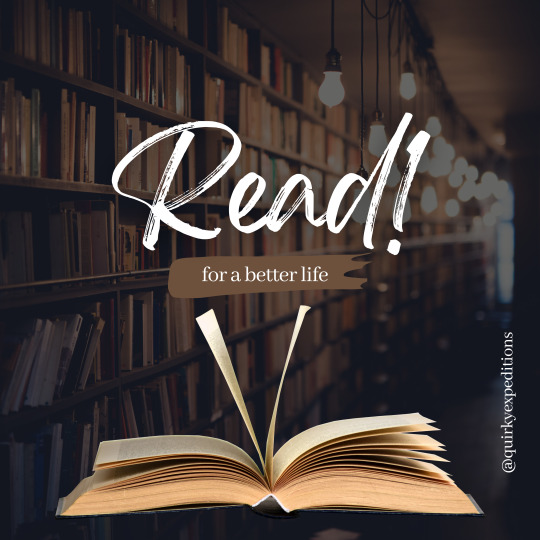
Books have the incredible power to transform our lives, expand our perspectives, and inspire us to reach new heights. In this blog post, we invite you on a captivating literary journey as we explore seven life-changing books that have the potential to revolutionize your thinking, ignite your passion, and empower you to create a fulfilling life. Each book on this list holds the key to unlocking new insights, fostering personal growth, and embarking on a transformative path. Get ready to embark on an enlightening reading adventure that will leave an indelible mark on your soul. Immerse yourself in these transformative literary works, allowing them to challenge your perspectives, inspire personal growth, and shape your journey toward a more meaningful existence. As you embark on this reading adventure, remember that true change happens when we apply the wisdom we acquire to our lives, making conscious choices and embracing new possibilities.
Happy reading and may these books inspire you to create a life filled with purpose, fulfillment, and endless possibilities:
"The Alchemist" by Paulo Coelho: This enchanting tale follows the journey of a young shepherd boy named Santiago as he embarks on a quest to discover his personal legend. Through captivating storytelling, Coelho's masterpiece imparts profound wisdom about following our dreams, embracing the unknown, and finding our true purpose in life.
"Man's Search for Meaning" by Viktor E. Frankl: Written by renowned psychiatrist Viktor Frankl, this seminal work explores the author's experiences as a Holocaust survivor and delves into the concept of finding meaning in life. It offers a poignant perspective on human resilience, the pursuit of purpose, and the power of optimism even in the face of unimaginable adversity.
"The Power of Now" by Eckhart Tolle: In this transformative guide, Tolle presents readers with a profound invitation to live in the present moment. Through insightful teachings and practical exercises, he helps us break free from the shackles of past regrets and future anxieties, guiding us toward a state of inner peace, mindfulness, and spiritual awakening.
"The 7 Habits of Highly Effective People" by Stephen R. Covey: Covey's influential book outlines seven principles that can empower individuals to become more effective in their personal and professional lives. By focusing on foundational habits such as proactivity, prioritization, and collaboration, readers gain valuable tools to enhance their productivity, build strong relationships, and achieve lasting success.
"Big Magic: Creative Living Beyond Fear" by Elizabeth Gilbert: Gilbert, the bestselling author of "Eat Pray Love," explores the realms of creativity, fear, and the pursuit of a fulfilling creative life in "Big Magic." Through personal anecdotes and insightful wisdom, she encourages readers to embrace their innate creativity, overcome self-doubt, and live a life driven by curiosity, passion, and joy.
"The Four Agreements" by Don Miguel Ruiz: Drawing from ancient Toltec wisdom, Ruiz outlines four powerful agreements that can transform our lives and relationships. By adopting principles such as impeccable words, not taking things personally, and always doing your best, readers are guided toward personal freedom, self-mastery, and authentic happiness.
"Sapiens: A Brief History of Humankind" by Yuval Noah Harari: In this thought-provoking exploration of human history, Harari takes readers on a fascinating journey from the emergence of Homo sapiens to the present day. Through meticulous research and captivating storytelling, he challenges our preconceived notions about humanity, offering profound insights into the past, present, and future of our species.
These seven life-changing books have the potential to ignite a transformative spark within you, leading you toward personal growth, self-discovery, and a more fulfilling life. As you embark on this literary journey, remember to approach each book with an open mind, embrace the wisdom they offer, and allow their profound teachings to permeate your being.
Check out our website - QuirkyExpeditions.com
#life changing books#best seller books#new york times best sellers#the alchemist#man's search for meaning#the power of now#The 7 Habits of Highly Effective People#Big Magic: Creative Living Beyond Fear#The Four Agreements" by Don Miguel Ruiz#Sapiens: A Brief History of Humankind#viktor e. frankl#stephen r. covey#eckhart tolle#paulo coelho#elizabeth gilbert#don miguel ruiz#yuval noah harari#seven life-changing books#literary journey#open mind#wisdom#mindfulness#motivation#spirituality#mindset#mind#passion#desire#profound teachings#journey
0 notes
Text
Thelem-Ra and the Princesses of Power
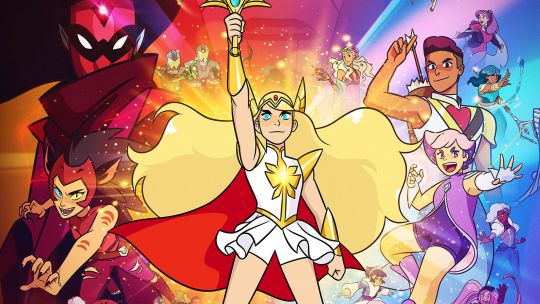
Due to strictly enforced gender norms, I wasn’t allowed to be obsessed with the original She-Ra cartoon. I could play with a friend’s sister’s She-Ra toy, but I never dared ask for my own.
That’s partly why Netflix’s remake She-Ra and the Princesses of Power means so much to me. Not only is it a version I can can openly discover and geek out over, but the characters’ wide range of age, gender expression and body type makes the fantasy realm of Etheria into a playground for the imagination -- one makes fans like me feel specifically included, even if it’s mainly aiming to entertain kids.
Any storytelling that draws from mystical currents will end up echoing familiar tropes and ideas from our own world. Attempts to portray existing magickal practices accurately almost always disappoint, as they did in Netflix’s other “princess of power” story, The Chilling Adventures of Sabrina (which is really entertaining nevertheless).
Isn’t it funny how the stories which offer up a wealth of artistic inspiration for magic often prove more durable than those depicting “real-life” magic use? The more abstract the characters’ powers are, the more possibilities we see in exploring them ourselves, and the more permission we feel to make something truly our own.
In the new She-Ra’s case (and in similar shows, like Steven Universe), magic is married to technology in a way that kids watching today will intrinsically understand, aligning neatly with post-modern chaos magick traditions.
In terms of old-school stuff, the Princesses’ magic is elemental in nature -- an expression of the soul of their homeworld, and a tool for regulating planetary harmony. The show departs from the classical elements of Earth, Air, Fire, Water, etc., which is fine, because their planet is not our planet, and its properties are still being revealed... to the characters, as well as to us.
But let’s not overlook that the very idea of “Princesses of Power” is old-school, and has a deep footprint in the history of tarot -- particularly the one crafted by the Dark Lord himself, Aleister Crowley.
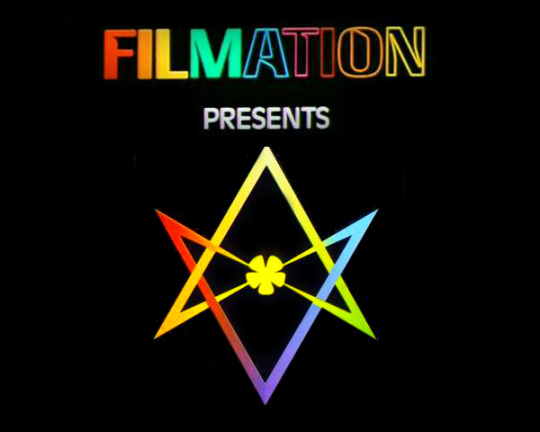
Before Crowley’s Thoth deck, the tarot’s court cards historically consisted of King, Queen, Knight, and Page -- a total sausage-fest, though Pamela Colman Smith brought out a wonderful androgyny in her illustration of the Pages (and in many of her deck’s other figures), which seems to even out the gender spectrum a bit, and is partly why the deck remains appealing to new users over a century later.
Conceived in the 1930s, Crowley’s court consists of a Knight, a Queen, a Prince, and a Princess. This “modern” twist must have seemed terribly progressive at the time, dethroning the King and elevating the court’s lowest ranking member (a page is just a humble servant of the royal court), consecrating that role as female.
You could write an entire book about the gender problems in Thelema (the religion founded by Crowley, which remains popular today). In fact, that book probably exists already, and contemporary Thelemites are continually exploring and re-examining the way our evolving social and scientific views of gender mesh with their religion’s core beliefs.
For now, all that’s important is that Crowley took a humble servant and elevated her to a PRINCESS OF POWER.

The four roles in the tarot’s court each correspond to a different classical element, the Page/Princess’s being Earth. And each of these four earthy figures is herself an expression of the classical elements: Fire of Earth (Wands), Water of Earth (Cups), Air of Earth (Swords), and Earth of Earth (Pentacles, or in Crowley’s case, Disks).
Exploring these cards in an earlier lesson, I wrote:
“The Page’s defining quality is not sex but immaturity, a word which inspires unnecessarily negative associations. Let’s not forget the raw potential we find in the young and/or untested, or the curiosity and vivacity they may bring to their work. As such, each of the four Pages represents a latent untamed force for change.”
What I love about Lady Frieda Harris’s illustrations in the Thoth deck is that the Princesses are all portrayed as doing something. These images could be pulled from the opening credits of She-Ra.
Think about that: she drew them as superheroes. The 1930s were the period when these kinds of heroes began to proliferate in comics, and Superman himself debuted in 1938 -- the same year Crowley and Harris began working on the Thoth deck.

Like She-Ra’s heroines, our tarot Princesses owe all their strength (as well as their weakness) to their signature elements, though in Crowley’s world there is a clear elemental hierarchy, due to spiritual ideas imparted by Western esotericism. As such, the Princess of Disks (Earth of Earth) sits at the bottom of the totem pole.
This kind of hierarchical thinking (and binary gender) is exactly what drives many people away from traditional forms of magick. I sympathize, and agree that we should never stop challenging these ideas.
However, what really we see in the Thoth deck is a setup for an archetypal story in which the low are made high; in which Princesses serve as the catalyst for changes that transform reality itself.
Just like Ace -- the lowest number in the minor arcana, but a symbol of tremendous power -- the Princess represents a place to build upward and outward from. Though she mirrors the queen in her gender, it’s the King/Knight she reflects in her agency and authority.
“The Princess is the throne of her Ace,” observes Thelemic teacher and author Lon Milo Duquette. In his book The Chicken Qabalah, he writes at length about the importance of Princesses: “They are positioned at the lowest end of our elemental universe, but they also embody the foundation of our universe.”
Awakening and exploring our Princess nature will gradually help us “escape the prison of matter” and “live in the bliss of the highest world.”
He even presents a diagram that shows how you can use the Princess and Ace-through-Ten cards to divide up the globe -- a handy tool for readings involving a geographical component.
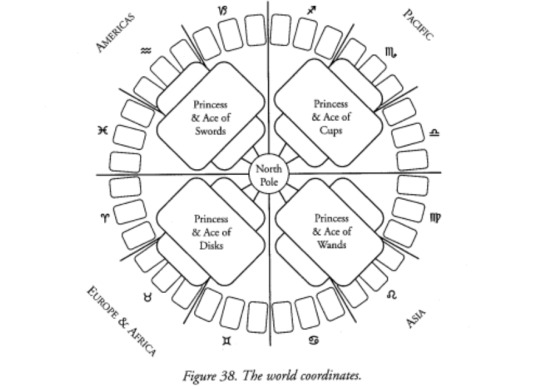
In the Netflix show, Adora is offered a very similar view of her world by First-Ones avatar Light Hope, who reveals how the Princesses -- each an expression of their respective element -- are all interconnected as regulators of Etheria’s holistic balance.

Of course, this is just an abstract diagram of Etheria’s actual geography. Entrapta’s model in the same scene shows that these centers of power are just as unevenly dispersed on Etheria as they are on our own planet.

Duquette’s book offers a qabalistic Creation myth based on these feudal archetypes, which may explain why royal figures still play such a prominent role in our storytelling.
“The you that you think is you is not you,” he explains. “It is a dream you. In fact, the you that you think is you is a dreamer inside a dreamer inside a dreamer inside a dreamer. You are the King of the universe, who has fallen asleep and is dreaming he is the Queen, who has fallen asleep and is dreaming she is the Prince, who has fallen asleep and is dreaming he is a sleeping princess.”
In Duquette’s fairytale of Creation, the Prince and Princess are twins birthed by the Queen -- different in sex, but alike in power. HELLO PEOPLE, this is the exact premise of the original She-Ra cartoon.

Within the new show, we see the struggle of a world straining to evolve in two opposing directions.
The Fright Zone is a technocratic military junta which only managed to come into power via political exploitation, capturing the Black Garnet runestone from the family of Scorpia, Etheria’s last “slumbering” princess.
One could compare the Fright Zone’s hierarchy to that of the classic Rider-Waite-Smith court cards, in which Hordak serves as King, Shadow Weaver as Lord, Force Captains are Knights, and all the the various wanna-be’s (including Adora and Catra in the first episode), servants, robots, and various scavengers remain in the Peasant class.
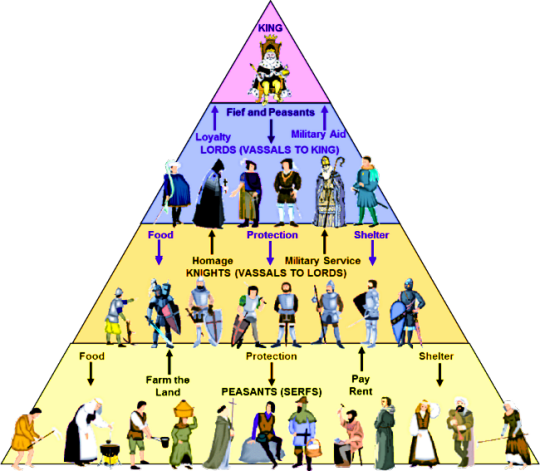
It’s not clear yet how the rest of Etheria is governed. It bucks this traditional structure, resulting in a lumpy sort of meritocracy in which those with the most magical power wield the most influence, but rulers are mainly tasked with maintaining harmony and protecting their subjects against external invasion. There’s evidence of a soldier class, but the “lowest” citizens we encounter are shown existing peacefully in (apparently) self-governing tribal cultures. They don’t serve the Princesses, they simply enjoy the freedom afforded to them by the Princesses’ rule. People live for love, for pleasure, for adventure, and/or the pursuit of intellectual aims.
(The only exception seems to be Entrapta, the Silicon Valley tech-bro stand-in who presides over her own servant class of attendants and robots. And it’s worth mentioning that she’s also the only Princess whose power isn’t anchored to an elemental source.)
In this sense, Etheria is an impressive embodiment of Thoth deck court structure, populated by Queens, industrious “princes” like Bow and SeaHawk, and true Princesses -- “Every man and every woman is a star,” with plenty of room to accommodate those who present neither as fully male or female, those with magical powers and those without.
But if you’ve already read this far, let’s take this one step even further and look at how SHE-RA IS ALSO A KNIGHT.
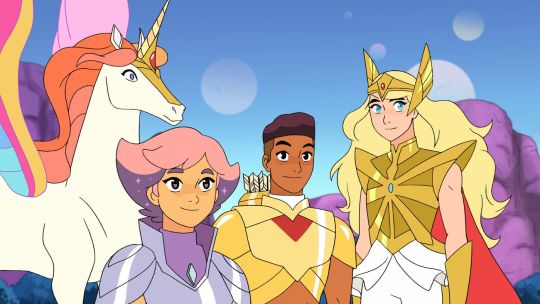
That’s right, you heard me: everything that Adora symbolizes as Princess, She-Ra articulates as a Knight. She even gets a horse! And a sword, and a shield! Note that Adora hasn’t really changed: she was a Knight in Hordak’s world also. She has simply relocated from one symbolic reality to another -- a more Thelemic one, in which Knights are kings. Thus, as She-Ra, she becomes Hordak’s symbolic equal.
And note that Noelle Stevenson’s re-imagining of the series is entitled “She-Ra and the Princesses of Power,” as opposed to the original title “She-Ra: Princess of Power.” She is of their ilk, but different. As Perfuma might say: “She is the She-Ra.”
Symbolically, Adora contains all the elemental potential of a Princess who must still evolve and struggle to awaken. She-Ra, however, is the elemental Fire that awaits on the other side -- the King who dreams he is a Queen, who dreams she is a Prince, who dreams he is a Princess. We know from Light Hope that She-Ra’s lineage extends thousands of years. She is not a person, she’s a function -- and that function is to protect Etheria by transforming reality.
In other words: Adora’s glorious transformation into She-Ra is a microcosm of Etheria’s transformation, which She-Ra herself was created to oversee.
youtube
In this way, the series bears the greatest resemblance to Alan Moore’s tremendous graphic novel Promethea, which tells the story of an ordinary young woman named Sophie who discovers she’s the latest incarnation of a mythical “science heroine” -- who may or may not have been created to usher in the Apocalypse. And she is guided in this process by other Prometheas, who represent an interesting range of ethnicities, body types, and genders.
Sophie’s exploration of her own newfound identity sends her on an odyssey that matches many beats in Adora’s. What are the limits of her new powers? How can she learn to transform at will? What dangers will this confer on her loved ones? Which parts of her belong to Sophie, and which to Promethea?
These are classic superhero problems, but Sophie’s quest is one that’s specifically designed to transform the reader as well: Moore has crafted a story that also serves as a primer for modern occult traditions, including tarot cards.

While Moore looks beyond Thelema, the works of Aleister Crowley remain a key influence -- the horny old magician even appears as a recurring character, in a handful of cheeky cameo roles.
Like She-Ra, Promethea points to the golden thread of continuity linking the individual and the divine. That’s a birthright that even the humblest, most overlooked person shares with the rest of humanity, but our world’s prevailing powers do everything they can to conceal that truth. Our own senses play tricks on us as well, supporting a view of the world in which we remain small and powerless, in which our lives, our suffering, our deaths, mean nothing.
The artists mentioned in this post -- Smith, Crowley, Duquette, Harris, Moore, Stevenson -- might not agree on everything, but they share the same quest: to awaken all these slumbering princesses. That includes you, dear reader. Wake up, your kingdom needs you!
Our language has another word for this sacred process: animation.
This is why you shouldn’t feel silly enjoying She-Ra or any other fantasy, at any age. This is why little girls shouldn’t be discouraged from play-acting as princesses (and neither should little boys). Society can only stand to improve from humans exploring their Princess powers. Many of these magical abilities will prove to be connected to life-saving (perhaps even civilization-saving) advantages further down the road. Magic is real, and we all stand to benefit from it.
“The clothes you're wearing, the room, the house, the city that you're in. Everything in it started out in the human imagination,” Moore writes in Promethea. “Your lives, your personalities, your whole world. All invented. All made up. All the wars, the romances. The masterpieces and the machines. And there's nothing here but a funny little twist of amino acids, playing a marvelous game of pretend.”
For the honor of Grayskull, it’s time to conduct yourself accordingly.

Have a tarot reading request or tarot-related question for Arcanalogue? Ask here. Tips accepted (but not required) via Venmo, @arcanalogue. Or support my Patreon? I’d love that.
158 notes
·
View notes
Text
Forefront - The Legend of Korra
Today I shall be revisiting one of my favourite animated shows ever, The Legend of Korra. The show’s inception falls just outside of the 5 year recency bracket, first airing in 2012, but the dramatic 3rd and 4th seasons and season finale debuted in 2014, and I regard it as one of the most well realised and successful Western animated series of recent years.
fig 1. a shot from the show’s opening sequence, featuring Korra herself
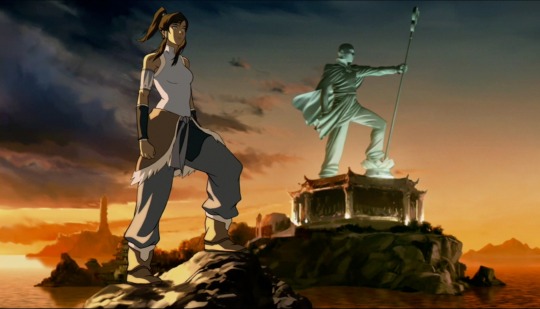
This show, alongside its parent series Avatar: The Last Airbender (2005), is one of my greatest animating inspirations, and so I wish to take a look at what makes it special, and try to relate it back to how I wish to incorporate that inspiration into my own work. Many of these points are mostly relevant to the narrative and storytelling side of animated film, but as this is a big part of my practice, my love of the form and my career aspirations, I want to take a look at each of them. There are a great number of reasons why I count this show as one of my favourites, so many that I feel I may have to list them in bullet point form as a primer:
1. The well-written characters, and character-driven narratives. Variety, humanity, humour, flaws, emotion, the works.
2. The worldbuilding and lore. As fantasy series go, this presents an extremely well-rounded synthesis of real world philosophy and culture with fantastical elements, complete with political discourse, personal/emotional problems, and often obscure and interesting presentations of morality.
3. The plot itself. Spanning 4 seasons or ‘books’, each one explores a different philosophical conceit, eg. power, change, balance, often through the decisions and successes or failures of the eponymous lead Korra. In many ways it is a coming-of-age story about her personally learning to deal with responsibility, while developing relationships and self-sufficiency too - and saving the world, of course. It is a deeply relatable story, told through a ridiculous lens. This is one of my favourite narrative modes, and one at which animation excels.
4. The animation. While mostly impressive for the superbly choreographed fight scenes (which always make exciting and inventive use of the rules of the world and the characters’ abilities, drawing on real world inspirations), there is so much to love about the sense of scale and style in this show, especially in the award-winning 2 part miniseries ‘Beginnings’ from Season 2.
5. Representation. This is increasingly a strong feature of modern media, and one I am very excited to see personally, but I remember having such a wonderful experience watching this show and thinking to myself, midway through an episode, how many strong and unique female characters took the lead of much of the story, but how it felt so natural I never even noticed. Not only that, it features many characters of different skin tones, religious denominations and philosophies, and sexualities, none of whom are ever reduced or reducible to those characteristics. It’s a very human and very powerful way of writing characters, and something for which I will always appreciate this show.
It would be a dream come true to have the chance to work on a show half this accomplished, as it has meant so much to me personally. But what aspects of my own practice can I relate to it, and what elements of it can I learn from? Let’s go back to these bullet points.
1. CHARACTERS. It has been taken as given, as part of my creative heritage in writing, that characters form the crucial basis of any powerful story. They must be complicated, sympathetic, dynamic entities that can exist outside of the page or screen, whose reactions to situations we as readers could anticipate as if they were our friends or family. I hold these ideas central to any narrative process I undertake, and often keep in mind the strong sense of character shown in shows like Korra. I also make it a priority for the stories I wish to tell to be character-driven - for narrative advances to be made based on how characters react to what they are given. As character often forms the strongest basis for relatable story, so it follows the importance of individual personalities in narrative decision-making is difficult to overstate. The very best stories tie this into a larger schema involving several characters, their relationships, their circumstances, the wider politics of the world and its central themes, while staying true to their respective tone. It’s a difficult thing to do, but if it wasn’t, everyone would be doing it.
2. WORLDBUILDING. This is generally only relevant to fantasy and sci-fi storytelling, but given how many animated films and series focus on these genres, I esteem it a big consideration alongside character in creating an effective undertsanding of animated storytelling. The Reality Effect is something discussed by writer Roland Barthes in his essay of the same name: it deals with the presentation of minutiae in storytelling, often needless or tangential to the plot, in order to achieve a greater sense of realism - the idea that the film world is not only comprised of an interlinked tapestry of character and plot, but of a thriving ecosystem completely independent of the narrative thread. Korra/ATLA establish world on a massive scale, incorporating nations, culture, history, food, wildlife, religious praxis, politics, technology, etc etc. All of this, whether helpful to the plot or not, builds a great impression of what this world would actually be like, and has the effect of increasing the viewer’s overall investment in it. When writing any scenario, I try to include as many tiny hints and illusions to the broader idea of that world. I am reminded of a famous quote from Ernest Hemingway, someone of whose work I am not a massive fan personally, but was undoubtedly a great creative force:
If a writer of prose knows enough of what he is writing about he may omit things that he knows and the reader, if the writer is writing truly enough, will have a feeling of those things as strongly as though the writer had stated them. The dignity of movement of an ice-berg is due to only one-eighth of it being above water. A writer who omits things because he does not know them only makes hollow places in his writing. (fig. 2)
3. PLOT. Korra is a wonderful story because, as discussed, it combines many different tenets of great storytelling, but (almost) always manages to tie together its many threads and come to a satisfying conclusion. Above these superficial successes, however, I am a firm believer that the duty of a storyteller should be in telling stories that need to be told, which Korra manages to do all the time. It tells grown-up stories about trust, about change, about growth, depression, pain, belief, abuse, parenting, sexuality, fascism, and it communicates them all to a young audience without ever being consdescending or reductive. This kind of balance is something I hope to achieve in my own stories, but am still getting the hang of. Something I am always considering is, who will receive the messages I am trying to communicate? How ‘difficult’ should I make my narrative, and how do I ensure I strike that balance? What choices will impact the tone of my work, and what aspects of the story should I focus on making the most prominent? It’s a real balancing act, but I am hoping practice will make perfect.
4. ANIMATION. This one is slightly more pertinent to how I am learning at the moment: how can I make characters’ feelings and personalities shine through movement? Korra has a very strong sense of body language, partly because it ties very strong links between spirituality and physicality: the martial arts practised by each character, and the way in which they move their bodies to use them, almost always reflect in some way how that person thinks, an in some sense how they might react to a personal problem rather than a physical one. In some ways I realise this is hyperliteral and relatively specific way of approaching physicality, however I think engaging with the subtlety of body language is one of the great tools both actors and animators have at their disposal in telling a story, and something which can be largely lost in literature. Here are a few examples of how characters in Korra may be understood by their body language:
fig 3. Korra and Opal bond with ‘airbending’. Their smiles, open positions and relaxed lines show us they are content in each other’s company

fig 4. Lin, hardline chief of police, stands cross armed and wary, yet clearly demonstrates emotion in her face and movement. She is personally attached to this interaction

fig 5. Child of the streets and pro-fighter Mako is guarded yet quick and efficient. He has the air of someone deteremined yet cool under pressure

Hopefully these examples demonstrate some of the admirable ways in which character is presented in Korra (as well as the relatively quality and conciseness of movement, which I also love about this show’s style).
5. REPRESENTATION. At this juncture, I have yet to attempt any broad stories, or even any with more than 2 characters. I am also aware of the dilemma of faithfully representing characters of different backgrounds than myself. Yet I believe in a world of colour, variety and synthesis, not renditions of the same experiences over and over, and animation, as a radical form and as my chsoen art, is as good a place to enact those beliefs as any. I take Korra as a prime example for reasons already mentioned, and hope to refer to its wonderful, dynamic world as often as possible in my own work, and keep diversity and representation politics at the front of my practice both on-screen and behind the scenes.
References
1. Korra
2. Hemingway, Ernest. Death In The Afternoon. New York: Simon and Schuster, 2014. pp. 316
3. http://avatar.wikia.com/wiki/Opal
4, 5. Tumblr
1 note
·
View note
Text
Episode 73: Too Far

“I hope you understand. I want to understand.”
Pearl might have a flair for big dramatic moments of antagonism, but on a day-to-day basis, Amethyst has always been the meanest Crystal Gem. This doesn’t mean she’s cruel, as this is a fundamentally sweet show, but it’s not nothing. Her tough exterior can lead to gruffness, her sensitivity can make her lash out, and she’s a lovable goon even on a good day, reveling in teasing Steven and getting a rise out of Pearl. She’s the friend that always remembers to punch you on your birthday.
I say this because we’re meant to empathize with Amethyst when Peridot merrily needles at all of her insecurities. And I do! The last thing Amethyst needs is for a certified Kindergartener to confirm that she literally came out wrong. She should be a massive brute with a body that matches her attitude, but in her runty frame, all that berserker energy comes off as scrappiness instead. We’ve really gotten to know Amethyst by now, and seeing Peridot dismantle the self-esteem she’s been building up since Reformed is rough stuff.
Buuuuut yeah this is Amethyst’s fault.
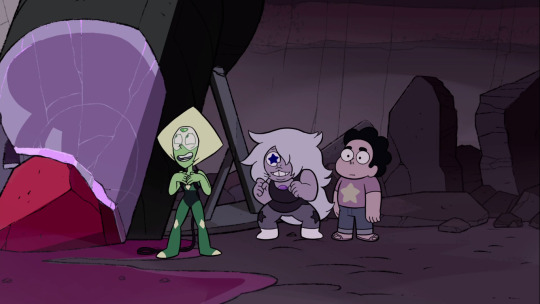
Amethyst spends the first half of Too Far making fun of Peridot. The intent here is debatable: an ungenerous reading could say that Amethyst is straight-up bullying her, but I doubt that’s what she meant to do. I’m pretty sure she’s just joshing around like she always does, and this is her teasing olive branch. But regardless of intent, look at this from Peridot’s point of view. She’s a captive of a planet that’s doomed to explode and is stuck working with a team that she’s been fighting until very recently. The leader of this team just put her on a leash, and one of its members is laughing at the way she talks. When they get to Kindergarten, Amethyst calls her a nerd, and even if she doesn’t know what the word is, she shows that she doesn’t like it. Peridot is then incited to roast Garnet and Steven, which earns laughter and starry-eyed approval.
So we’ve got this hyper-literal stranger who knows she’s being teased, but is also getting laughter for saying what she feels, and gets even more laughter when she bluntly assesses two of Amethyst’s friends, one of whom is right there with them. Why would Peridot think that Amethyst would get upset by continuing these analyses? Especially because she's saying what she thinks are nice things about Amethyst at first.
Based on the model for friendship that Amethyst has presented, Peridot is doing the right thing. Then Amethyst changes the rules, Peridot doesn’t understand, and at the end of the episode she’s made to apologize. But Amethyst, for whatever reason, is not.
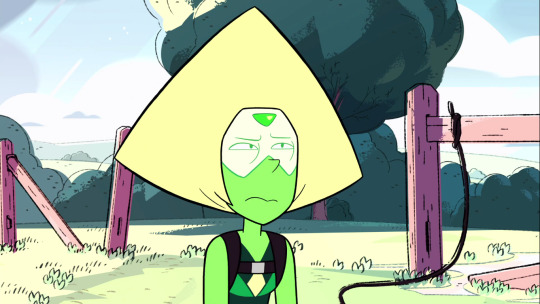
Peridot is hardly pure and innocent. The reason she was tied up in the first place was her overt fusionphobia, and even if a bigot doesn’t understand that their toxic views are wrong, it doesn’t excuse harmful behavior. (They should also be educated, but we’ll get to that in Log Date 7 15 2.) She hasn’t learned her lesson from Back to the Barn, and only reluctantly acknowledges Pearl’s skills. She’s still ornery and is still coming off many, many episodes of being the bad guy.
But it’s made very clear that Peridot doesn’t understand basic things about Earth—that’s the whole impetus for Amethyst messing with her—so it’s super unfair to expect her to understand the nuance of Amethyst’s capricious enjoyment of mean humor. And it’s okay that Amethyst is unfair about this. It’s totally within her character to be hypocritical about this. But that doesn’t mean she shouldn’t apologize for her part of this conflict, and teach all the little Amethysts watching that if your language of friendship is light bullying, you better be able to take what you dish out.

Okay, so that’s my big gripe with Too Far, but that doesn’t mean I don’t like the episode. Even if it doesn’t stick the landing, there’s some terrific character work for Peridot and Amethyst here. Peridot gets a lot more to do, because she’s the one who’s allowed to grow here, but I like how Amethyst gets uncomfortable even when Peridot is praising her as “the only Crystal Gem that’s actually a Gem,” as anything that makes her stick out of place among her family is unwelcome attention. And her ensuing bad mood is played just right: she’s not having a meltdown, she’s just a sullen teenager. Peridot will appreciate the practice when Lapis comes to town.
But yeah, in terms of growth this is Peridot’s episode through and through. It includes the first appearance of her tape recorder, which allows us an unprecedented level of narration on this voiceover-free show, and this stream-of-consciousness helps quickly develop her in a way that other characters, who’ve had seventy-odd episodes to burn, haven’t needed. It’s our first look into Peridot as a new source of metacommentary, starting with her legendary description of Pearl’s main activities: “Singing, crying, singing while crying.” She’s starting to settle in and care about what the Crystal Gems think, and it’s cool to see her actually being helpful instead of projecting competence to spite Pearl: taking a drillhead from an injector is a good idea!
I think the coolest thing about this episode is how her desire to please Amethyst gets extra context from Message Received, where we see just how seriously she takes the hierarchy of Homeworld. Her reverence for Yellow Diamond shows that she’s as invested in being a subordinate as she is in lording over Pearl: the notion that every Gem has her place is Peridot’s gospel, so of course she sees Amethyst as “the best Gem here” compared to a pearl, a fusion, a hybrid freak, and a lowly peridot. Even without her explicitly talking about Amethyst’s rank, we see Peridot trying to get on her good side in a way she never does with any other Crystal Gem, Steven included. Then the same behavior is seen when the Ruby Squad mistakes Amethyst for Jasper in Back to the Moon, further making sense of Peridot’s deference. This is the sort of thing that makes rewatches so fun.
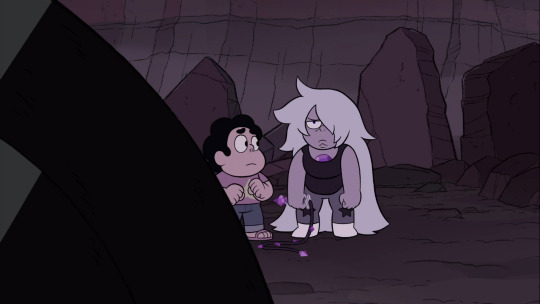
Despite Amethyst mostly being the cause of the episode’s conflict and a springboard for Peridot to change, we get a lot of groundwork here for her future. It takes a while for her Season 2/3 arc to really rev up: by the time we get to the meat of it in Crack the Whip, Garnet’s and Pearl’s are long done, even though Amethyst’s actually starts first (Reformed barely precedes Sworn to the Sword and Keeping It Together). But I sort of love that. Because as we learn in Too Far, her issues largely stem from arriving late.
The episode wisely avoids direct comparisons to Jasper, even if it’s easy to leap to that image when Peridot describes the ideal quartz. We also don’t mention an even more obvious comparison, Rose Quartz, whose class is in her name and who we know was gigantic (even though Pink wasn’t a true quartz and was several times larger than the new form she chose). Instead, the knowledge of what these bigger Gems are “supposed” to look like is a ticking time bomb for Amethyst’s self-image, which wasn’t great to begin with. There’s way too much to deal with right now to delve too deeply, but it’s nice to have Too Far set things up here so Amethyst’s inevitable breakdown isn’t out of nowhere.

Garnet is fantastic, obviously. She’s efficiently used for humor and has room for a badass character moment that’s just the right amount of petty. Pearl is in full work mode, so of course she gets a small freak-out, but her understated competence continues to nicely contrast Peridot’s intensity.
Steven is ever-attentive in his new job as Peridot’s Earth Coach, which honestly does give an in-universe reason for her one-sided apology; I’m sure Amethyst would’ve seen the error of her ways if the show’s conscience was hanging out with her instead. I love that the emotion he coaxes out of Peridot is “smallness,” because that’s how she’s conditioned to see the universe. Big Gems are important, small Gems aren’t. There are obviously exceptions (pearls are tall, if reedy), but Steven allows her to express herself in her own terms while Amethyst teases her for it. Yes, he still laughs along with Amethyst, because he’s not perfect and also is a kid, but his empathy is what allows for their stirring final exchange.
It is big of Peridot to admit that she’s wrong, even if she needs to take baby steps like a prerecorded message to do it. She’s still learning. For me, her apology is what confirms that she has potential as a Crystal Gem, and not just as a friend of Steven’s. It took a couple episodes, but Peridot has gone from experiencing Steven’s overtures of friendship to trying them out for herself. Despite some great storytelling to make us doubt her as the season nears its end, the damage is already done, and her heart has been exposed. She even gets a little moment of star-like hair, which I doubt was the intent, but I love it!
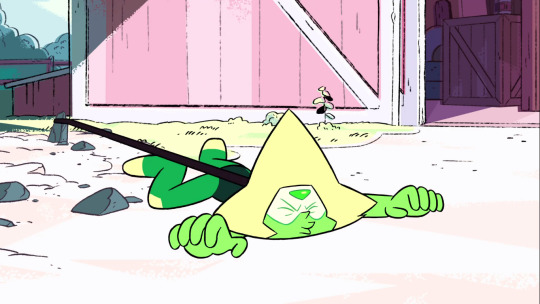
(But guh just apologize already Amethyst. Drives me nuts.)
Future Vision!
Man, Peridot would’ve had a way easier time getting tools from her leash’s radius if she had some sort of, I dunno, metal powers or something.
I’ve never been to this…how do you say…school?
Florido’s High School AU is our main promo art once again; I love the little touch that they’re fighting in the AV room. And that Pearl is the one who went off to tell an adult. What a narc.
We’re the one, we’re the ONE! TWO! THREE! FOUR!
There’s so much good here, but sorry, I do think it’s really important that all the Amethyst-like kids out there see a story where they’re actually held accountable for their unintentional riling. So it ranks a little low, but not too far down.
(Not as good as Steven’s drill pun, but what is?)
Top Fifteen
Steven and the Stevens
Mirror Gem
Lion 3: Straight to Video
Alone Together
The Return
Jailbreak
Sworn to the Sword
Rose’s Scabbard
Coach Steven
Giant Woman
Winter Forecast
When It Rains
Catch and Release
Chille Tid
Keeping It Together
Love ‘em
Laser Light Cannon
Bubble Buddies
Tiger Millionaire
Lion 2: The Movie
Rose’s Room
An Indirect Kiss
Ocean Gem
Space Race
Garnet’s Universe
Warp Tour
The Test
Future Vision
On the Run
Maximum Capacity
Marble Madness
Political Power
Full Disclosure
Joy Ride
We Need to Talk
Cry for Help
Keystone Motel
Back to the Barn
Like ‘em
Gem Glow
Frybo
Arcade Mania
So Many Birthdays
Lars and the Cool Kids
Onion Trade
Steven the Sword Fighter
Beach Party
Monster Buddies
Keep Beach City Weird
Watermelon Steven
The Message
Open Book
Story for Steven
Shirt Club
Love Letters
Reformed
Rising Tides, Crashing Tides
Onion Friend
Historical Friction
Friend Ship
Nightmare Hospital
Too Far
Enh
Cheeseburger Backpack
Together Breakfast
Cat Fingers
Serious Steven
Steven’s Lion
Joking Victim
Secret Team
Say Uncle
No Thanks!
5. Horror Club
4. Fusion Cuisine
3. House Guest
2. Sadie’s Song
1. Island Adventure
21 notes
·
View notes
Text
Joseph Becker
Associate Curator of Architecture and Design
San Francisco Museum of Modern Art
San Francisco, California
sfmoma.org
Photo by Matthew Millman
SPECIAL GUEST SERIES
Joseph Becker is associate curator of architecture and design at the San Francisco Museum of Modern Art. He has contributed to over twenty exhibitions at the Museum, including the curation of Tomás Saraceno: Stillness in Motion – Cloud Cities (2016-17), and Field Conditions (2012), as well as the co-curation of Nothing Stable Under Heaven (2018), Typeface to Interface: Graphic Design from the Collection (2016), and Lebbeus Woods, Architect (2013-14). During his 11-year tenure, Joseph has also been responsible for numerous major acquisitions for the Museum’s collection, as well as exhibition design and visual direction of many of its architecture and design exhibitions. He has served on architecture, design, and public art panels; been an invited juror at national architecture programs; led workshops on exhibition and experiential design; moderated public dialogue; and lectured internationally. Joseph earned both a bachelor of architecture and a masters of advanced architectural design (in design theory and critical practice) from the California College of the Arts, where he is currently a visiting professor. When Joseph is not working, you can find him sailing his 1979 Columbia 9.6 on the San Francisco Bay, or working on a slow remodel of his 1948 house in Bernal Heights.

FAVORITES
Book: I really avoid playing favorites, and I love books, so I’ll just say that Reyner Banham’s Los Angeles: The Architecture of Four Ecologies is always on my list of required reading, both because of my interest in architecture and as a native Angeleno. I don’t have much time to read for fun, so I’m currently picking at short stories by George Saunders. Just the right amount of weird.
Destination: Marfa. Worth the journey. I’ve been lucky to visit a handful of times over the past few years, doing research on Donald Judd’s furniture practice. The wide open sky of West Texas has a very special quality.
Motto: I once had a keychain that said “Screw it, Let’s do It.”
Prized possession: Right now I’m really excited about my 1953 O’Keefe and Merritt stove, which I just put into my kitchen. I have many small collections of really wonderful and quirky objects, but I love the four-inch pine needle basket that my mom wove for me at our family forestry-service cabin in the Sierras, where I am right now.
THE QUERY
Where were you born?
At home in Los Angeles.
What were some of the passions and pastimes of your earlier years?
Certainly when I was a child I was a big Lego fan. But I also took art classes at Dorothy Cannon’s renown studio in North Hollywood, which exposed me to paint and clay and charcoal. She was an amazingly encouraging teacher.
What is your first memory of architecture as an experience?
When I was four, my parents bought their 1930s ranch house across the street from my mom’s sister, and worked with an architect to build an addition. I have early memories of exploring the house under construction, and especially sitting at the bottom of the empty swimming pool and marveling at the scale and curves and very different quality of space inside the concrete shell.
How did you begin to realize your intrigue with architecture and design?
I think I was always interested in building and making things, even as a child. My dad and I used to make model rockets, and we built my bedroom furniture to my designs when I was around 13. I also remember traveling with my parents in the UK when I was 14, and chose to take them to the Design Museum in London because of an ad I saw in the underground. It was a Verner Panton exhibition, and from then on I was hooked on the idea of total environment. The psychedelic aspect was pretty good, too.
Why does this form of artistic expression suit you?
I think I’m interested in the logic of design and architecture – the creative response to problem solving. But I really get excited when the boundaries break down, and the architecture or design response is an artistic critique of societal conditions, and perhaps a vision for an alternative future.
What led to your coming on board with the San Francisco Museum of Art?
I knew I wanted to study architecture, but not necessarily practice it. My interest in art led me to explore curatorial practice as a way to combine the two.
What is your greatest challenge in this role?
Each exhibition or program has unique challenges. Working with living artists is a really exciting challenge – pushing and pulling in a dialogue while keeping their vision pure. I think the greatest challenge is that I never feel like I have enough time for robust scholarship on any exhibition, no matter how far in advance I begin planning.
Is there a project along the way that has presented an important learning curve?
Each project is an opportunity for growth in a different arena. I think my very first project at SFMOMA, which was designing the giant walk-in freezer that housed the Olafur Eliasson ice-covered hydrogen powered race car chassis called Your mobile expectations, set a high bar. The car fit in the freight elevator by two inches and we had a pretty hard time calculating what it would weigh once laden with its frozen shell.
What exhibition remains most memorable, even today?
There are two exhibitions I have curated that I actually see as a continuation of a single idea. Field Conditions (2012) and Tomás Saraceno: Stillness in Motion – Cloud Cities (2017) each deal with pushing the boundaries of architecture as conceptual spatial practice, with foray into the hypothetical and visionary. I worked with some amazing artists in Field Conditions, and was very excited to put drawings by Lebbeus Woods on view that I had studied in undergraduate school. I acquired those drawings for the Museum collection, and then co-curated the first comprehensive survey of Woods’ work after his passing.
How would you describe your creative process?
As a curator, you’re always looking around for new artists and projects, and connecting them to explorations in the past. I think my process is really just about trying to see as much as possible and trusting my instinct when it comes to what I think is interesting, and want to share with the Museum’s audience.
What three tools of the trade can’t you live without?
I’m completely indebted to our museum library, and the ability to access hundreds of amazing publications. Obviously the internet is an indispensable research tool, but I try to not get mesmerized by it – you can get tangential quickly. And without my glasses I’d have a hard time doing anything, so I have to credit LA Eyeworks for keeping me bespectacled with their amazing frames.
How has your aesthetic evolved over the years?
I lean toward simple and beautiful things, often with history, or some sense of timelessness.
Is there an architect/designer living today that you admire most?
For many reasons, I tremendously admire Olafur Eliasson. His multivalent practice spans many of my interests, from complex geometry to color and light. Beyond sculpture, he works in architecture and design, as well as humanitarian and socially driven design work. And his studio culture is really quite incredible, revolving around food and collaboration.
What has been a pivotal period or moment in your life?
I lost the 1907 loft that I had lived in for a decade to a house fire in 2014. It was a 2,000 square foot unfolding architecture project that I had spent ten years building and rebuilding, and was the center of my world. A fire at the other side of the building ended up red-tagging the entire structure, and all the tenants were subsequently evicted. I spent the next few months in formative self reflection, and can attest to the power of pushing through.
Do you have a favorite artistic resource that you turn to?
I spin through a handful of different art, design, and architecture websites. I think biennials and triennials are amazing opportunities to see so many contemporary projects at once.
From where do you draw inspiration?
Inspiration is everywhere, if your eyes are really open.
What’s the best advice you’ve ever received?
Certainly to remain open to new ideas and experiences. Say ‘yes’ until you have to say ‘no.’ This can be problematic when you say ‘yes’ to too many exciting projects. Really, the best advice is to just show up, and see where it goes.
Is there a book or film that has changed you?
I have always been fascinated by Film Noir for its portrayal of architecture, and the city as a character that is laden with nefarious potential. I love the art of storytelling, whether in cinema, poetry, or history.
Who in your life would you like to thank, and for what?
I am in general incredibly grateful for so many people who have had a positive impact on my life, from family to friends and colleagues. Two people I would love to thank, but can’t, would be both of my grandmothers, who were each incredible artists in their own right and taught me how to look, and see, the creative potential inside me and in the world beyond.
What are you working on right now?
I just delivered a commencement address for the graduate programs at the California College of the Arts, so that was something that I had been focusing on until last week. I’m currently wrapping up the details on an exhibition catalogue that I am the co-author of, with my colleague Jennifer Dunlop Fletcher, on The Sea Ranch, which will launch when the show opens at the Museum in December. Next month I’ll open a small show of Steve Frykholm’s playful Summer Picnic Posters for Herman Miller, which he created from 1970 to 1989. And, in two months, I will be opening an exhibition that I am curating on the furniture practice of Donald Judd, which I am very excited about. We will have Judd-designed chairs outside the gallery that our visitors can sit in!
What drives you these days?
I’m coming out of an incredibly busy six months, with opening four exhibitions, teaching, and writing for various projects, so I’m just counting down days until I can take some time off in August.
1 note
·
View note
Text
In Times of Conflict, How Can We Support the People Who Keep Culture Alive?
https://sciencespies.com/history/in-times-of-conflict-how-can-we-support-the-people-who-keep-culture-alive/
In Times of Conflict, How Can We Support the People Who Keep Culture Alive?

The fate of Armenian cultural heritage sites in Nagorno-Karabakh is unknown. A recent Smithsonian magazine article highlighted why scholars and cultural institutions are calling to protect Armenian heritage in the landlocked mountainous region in the South Caucasus.
The report succinctly described the situation leading into the current conflict.
Legally recognized by the international community as part of Azerbaijan, Nagorno-Karabakh has been controlled by an ethnic Armenian majority since 1994, when the clashing nations agreed to a ceasefire. Following the war’s conclusion, the region’s Armenian residents established a “separatist, self-declared [but unrecognized] republic … backed by the Armenian government,” per BBC News. The countries have been locked in a tense stalemate punctuated by occasional violence, such as a period of fighting in early April 2016, according to the Council on Foreign Relations.
While a Russian brokered peace deal remains precarious, the status of Armenian heritage sites on lands that have been ceded to Azerbaijan is a growing concern. Not only have those from Azerbaijan, known as Azeris, launched intentional attacks on heritage sites, like the Holy Savior Ghazanchetsots Cathedral, they have also intensified a campaign to assert alternative historical narratives for the heritage in the region. Heritage once again finds itself at the crosshairs of conflict.

Targeting heritage sites (above: Ghazanchetsots Cathedral took missile fire in October 2020) is a powerful tool in the arsenal of modern warfare.
(ԶԻՆՈՒԺ MEDIA, Wikimedia Commons )
“Azeri aggression against the rich and irreplaceable cultural heritage of its indigenous Armenian people has only just begun,” wrote Christina Maranci, professor of Armenian art and architecture at Tufts University.
These sites, despite being historic locales, are integrally tied into present realities. They are spaces where people create and affirm their identities, meet with friends and family, or even make their livings, whether acting as priests at a small medieval church or setting up locally run B&Bs to cater to tourists. Many heritage sites are not inert buildings that are purely vessels of history but are also living and breathing entities that are very much situated in the daily lives of those that live around them.
Take for example the Associated Press’ haunting photos of the situation, including a couple getting married in Ghazanchetsots Cathedral surrounded by rubble and debris. Just days before the 19th-century cathedral had been relentlessly shelled by Azeri military forces. Targeting heritage sites, whether through physical destruction or historical revisionism, is a powerful tool in the arsenal of modern warfare. Examples of heritage in conflict abound, ranging from ISIS’s staged demolition of Palmyra in Syria to the destruction of the Old Bridge of Mostar (Stari Most) during ethnic conflict in Bosnia and Herzegovina in the 1990s.
Following the conflict in Nagorno-Karabakh, media outlets, cultural institutes, dignitaries and scholars, including the Metropolitan Museum of Art, the New York Times, Russian Foreign Minister Sergey Lavrov and UNESCO general director Audrey Azoulay released statements denouncing the destruction of sites and calling for documentation, monitoring and preservation of the region’s cultural heritage. While these appeals for safeguarding and monitoring heritage are necessary, they often view cultural heritage as immobile, tangible spaces without taking into account the living, intangible qualities of heritage—music, dance, song, cooking, craft and storytelling, to name a few.

Many heritage sites are not inert buildings that are purely vessels of history (above: Dadivank, the 9th to 13th century Armenian monastery) but are also living and breathing entities that are very much situated in the daily lives of those that live around them.
(Photo by Safi-iren, Wikimedia Commons )
Calls to action, which denounce the physical destruction of sites, should also spotlight the threat heritage decimation has on people and their cultural livelihoods. The trope of a universal, common heritage that must be saved for future generations is heralded and helps to stir international attention and assistance, but we must equally take into consideration a need to support the people who have a hand in keeping their culture alive and thriving. In addition to contributing humanitarian aid, we should be supporting and creating spaces that allow cultural ingenuity and heritage expression to flourish. While not a perfect solution, this action would give agency back to those who have experienced attacks on their history, heritage and identity.
In times of struggle, supporting a peoples’ collective creative output helps to generate hope and resiliency. In the summer of 2018, the Smithsonian Folklife Festival showcased two international regions in the programs—“Catalonia: Tradition and Creativity from the Mediterranean” and “Armenia: Creating Home” on the National Mall in Washington, D.C. While the Festivals are planned and organized years in advance, that summer happened to mark a period of political turmoil and unrest for both Catalonia and Armenia.
In October 2017, the semi-autonomous region of Catalonia had voted for independence, a move declared illegal by Spain’s Constitutional Court, which led to the Spanish government dissolving the Catalonian parliament and ordering immediate regional elections. Just weeks before the Folklife Festival, Catalan nationalists in June regained control of the region, ending Madrid’s direct rule.
As tensions flared in Catalonia, Armenians were experiencing similar social unrest, with the April-May 2018 Velvet Revolution, where civilian protesters won against the deep-rooted corruption and oligarchical nepotism that had infiltrated Armenia’s post-Soviet government. Yet in the midst of all this political upheaval, more than 100 participants flew from Armenia and several hundred from Catalonia to share their culture, heritage, and hopes for the future with the hundreds of thousands of tourists who descended upon the National Mall to enjoy the Folklife Festival activities.

Stonemason Ruben Ghazarayan, one of the thousands of Armenians serving on the frontlines, was a participant at the 2018 Folklife Festival.
(Gregory Gottlieb)
The synergy between the two groups and their love for their craft and heritage was palpable. As a presenter at “Armenia: Creating Home” and an ethnographer conducting field research, I spent a great deal of time with the participants from both Armenia and Catalonia and witnessed a heartfelt enthusiasm as they shared their songs, stories, crafts and food with each other and with visitors. The Armenian participants were familiar with the Catalonian struggle, both through their recent Velvet Revolution, but also in their ongoing plight with Azerbaijan over Nagorno-Karabakh.
There was a language barrier between Armenians and Catalonians, but they found unique ways to communicate. Joint programming often fostered this communication, like when Catalan baker Angel Zamora and Syrian Armenian chef Andranig Kilislyan cooked together on the Hatstatoun (Armenian for “bread house”) stage to prepare coca de recapate and lahmajun, Catalonian and Armenian snacks centered around a favored ingredient: bread. But there were also moments of impromptu heritage connections, like how Catalonian and Armenian presenters would burst into song and dance in the hotel after Festival work hours, often playing improvisational music that seamlessly and surprisingly wove together the heritage sounds of both regions.
On the last evening of the Festival, after the crowds had all gone home, several Armenian participants and food vendors beckoned their Catalonian counterparts over to their performance tents and stages set up the Festival grounds. Armenian BBQ was passed around, wine flowed and the Armenian musicians played traditional dance music.
There, in the shadow of the Washington Monument, we danced in a shared expression of communal euphoria in a closing-night celebration of the two-week summer Festival. It was a demonstration on a large scale of how heritage practices—singing, dancing, and the sharing of food brings people together. One Armenian participant noted of her new Catalonian friendships, “I never thought I would find a group louder and more boisterous than Armenians, but I think we’ve met our match!”

Participants from both Armenia and Catalonia (above: Catalonians demonstrate their tradition of human tower building) witnessed a heartfelt enthusiasm as they shared their songs, stories, crafts and food with each other and with visitors.
(Pruitt Allen)
While the evening was celebratory, it also reified a deeper bond: a connection both groups felt through their shared socio-political struggles. As one Armenian American reflected about Catalonia’s presence at the Festival and the simultaneous conflicts happening in both regions, she recalled, “I viscerally understood, to be this country [Catalonia] surrounded by adversaries and in danger and to fight for freedom is something we [Armenians] knew very well.”
Unfortunately for Armenians, that fight has now escalated into a war. On September 27 this year, Azerbaijan, backed by the Turkish government, launched an offensive on Nagorno-Karabakh as a means to take over the regain. Thousands of Armenian soldiers were called to the front lines to protect and defend Nagorno-Karabakh.
Ruben Ghazarayan, a participant at the 2018 Folklife Festival, was one of the thousands of Armenians that served on the frontlines. Ghazarayan along with his brother Karen, are self-taught stonemasons from Yeghegnadzor and constitute some of the only artisans who continue to practice khachkar (cross-stone) making in Armenia. I remember their joy and enthusiasm at the Festival as they interacted with visitors who asked countless questions about their craft, even letting some curious onlookers take a hand at carving. Visitors were fascinated with the Ghazarayans’ limestone khachkars and their masterpieces sold out in the Festival Marketplace; the first time their work was ever offered for sale outside of Armenia.
They left excited for the growing possibilities and admiration for their craftsmanship, and when I visited them a year ago in Armenia they were overjoyed to show me their newly renovated workshop at the base of the Areni-1 archaeological cave complex; a harmonious example of how heritage sites, cultural production and living go hand-in-hand.

Historic locales (above: the 19th-century Ghazanchetsots Cathedral before it was attacked in October 2020) are integrally tied into present realities. They are spaces where people create and affirm their identities, meet with friends and family, or even make their livings,
(Vladimer Shioshvili, Wikimedia Commons)
This past October, as Ruben Ghazarayan fought on the frontlines of the Nagorno-Karabakh conflict, his brother Karen turned to making and selling their khachkars to Armenian diaspora abroad to support their families during the conflict. Despite the uncertainness of war, Karen took to his hammer and chisel to produce cultural heritage as a means of sustenance and resilience because as he says: “In these hard times, khachkars are our places of worship (church).”
Karen continues to work, despite not having his brother by his side, because as he says: “Now more than ever it is important to talk about Armenian arts and Armenian culture. Our khachkars are a small wish and hope for our diaspora, our friends, and our relatives abroad.” While conflict still broils in the region and the fate of Armenian heritage sites in Nagorno-Karabakh remains in a precarious state, Armenians continue to produce and sustain cultural practices despite direct attempts to erase their heritage.
#History
0 notes
Text
The Benefits of Storytelling in Digital Marketing

Go back in time and recall this morning – do you remember that ad banner embellishing the news website you saw while you were headed to work? Or do you recall which brand’s commercial aired while you were tuned in to a radio? Or which company’s ad played while you were waiting for your video to load? It is highly likely that you will struggle to identify the advertiser.
Even the marketing professionals barely give any heed to these messages, so how can we expect an average fella to do so?
That’s where something changed – storytelling found its way in digital marketing and turned the world upside down.
Gone are the days when digital marketing was all about focusing on peppering the audience with the same message time and time again until their catchphrases were drilled into their heads. Instead, marketers are now striving to offer exceptional customer experience, getting the audience to search for them, looking forward to seeing their recent creations.
The Basics of Storytelling
Storytelling triggers that part of the human brain, which is accountable for emotions. As consumers, those feelings influence the way we perceive a particular brand. Remember, you should never reduce your consumers to numbers on a spreadsheet. Go back to your roots as a storyteller and connect with your audience’s emotions. Make something so incredible that it propels the viewers to rush to their family and friends and ask them to check out this new brilliant ad.
Tell your audience about your brand, what it represents, and why it exists. Although your narrative will most probably be associated with your product, what really matters is getting your target audience to get a load of you. You should aim at getting the consumers to search for you eagerly by their own free will, instead of you pushing them to read, see or hear your message.
Many famous brands have got this right, and with just a little bit of tweaking, they have seen a vast improvement in their ad performance as well as overall sales.
Why Should We Tell Stories
From the most long-serving executive to the newest intern in an organization, each member can tell a story. But the question is, where does this immense love for stories arose?
There are endless reasons we tell stories – it can be to entertain, sell, engage, or educate the consumers. This is just a way for brands to share their stories with their audience.
For the sake of saving you some time, there are three primary reasons we would love to highlight here:
Connecting with your target audience
Typically, customers think of a brand as an untouchable entity that leads the common people (aka any customer who doesn’t have a lush Swiss bank account). Therefore, companies generally turn out as unrelatable and foreign, hampering the efforts of marketers to make them appear trustworthy. However, storytelling helps the brands to tap into the feelings of their audience, encourage them to engage with their company, and establish an emotional relationship with them. Create a story around your brand to win over consumers!
Simplifying intricate messages
How will you be able to grab a potential customer’s attention within a couple of seconds? Considering the short attention span people have these days and the kind of fast-paced world we live in, brands have a very small window of opportunity to convey their idea. Storytelling provides a way to ditch this roadblock and get your message across!
Uniting people
People from different cultures and different parts of the world understand the basic concept of a hero, his hunt, and triumph. Stories are like a global language that develops a sense of community among all types of people. It’s like bringing different people together. Today customers want to see a brand genuinely caring for them and offering them value through their products and services.
What Makes a Good Story So Good?
The great, the bad, the worst – all these terms correspond to the audience’s opinion. In spite of that, there are a few non-negotiable components that together help in delivering a remarkable storytelling experience.
These characteristics make for a great story:
Global: Every member in your audience should find all the characters relatable and be able to put themselves in their shoes as they continue trekking deeper into their hunt.
Long-Lasting: The story should be certain to pass from one person to another and maybe from one generation to the other, be it because of the narrative’s characterizing humor, boldness, or pure emotions.
Captivating: Your story should be able to keep the audience hooked to their seats, wondering, “what’s going to happen next?”
Well-structured: It should communicate the clear-cut key message, helping the audience consume it.
The Process of Storytelling
Storytelling too is an art, and just like any other artist, storytellers also need to be skilled, creative, and do lots (literally lots) of practice. So, let’s dive into this magnificent storytelling process.
Define your core message: Don’t just let your creativity run free with design ideas, lengths, and formats; first, you must define your key message. Just like before constructing a building, its foundation is laid; you also need to have clarity on what will hold your story up. Try to summarize the concept in 6-10 words. If you are not able to do so, then your core message is not clear yet.
Know your target audience: Start by analyzing your data. Try to find out who would love to hear your narrative? How would they respond to your story’s core message? Research your target market, create your buyer personas, and display each narrative to the ideal audience group.
Determine what story you will tell: Put your story together while bearing in mind how you want your audience to react. What’s your aim?
Nurturing a sense of community: Make up a story that persuades the audience to share it with other people by utilizing relatable circumstances and characters.
Communicating your brand values: This is especially important when promoting values that some of your audiences may not share or understand in the first place. Employ familiar characters and storylines to make it easy to show how your story is applicable to their personal experiences.
Triggering action: Tell how the characters in your story accomplish a specific task successfully and how your audience might also do the same in real life.
Pick the most effective medium: Storytelling can take various different forms – while few tales are read, few are heard and watched too. The medium you choose will most probably depend on your tale itself and also on the available resources (such as money and time). Some of the most famous storytelling mediums are:
Written Stories: These are narrated via articles, blog posts, and other text-based content. Since all written stories need just a simple word processor (which is also available for free now with Google Docs), this is the most affordable medium.
Visual Stories: These can be told through a wide variety of media ranging from videos to games and interactive stories.
Oral Stories: These are usually narrated “live” and can be told in various forms, including podcasts, radio appearances, and live events. Since these are shared in person, these stories are defined by their unedited nature. However, oral storytellers require much more practice and skills to ensure they can pass on the right message and evoke an emotional reaction from the audience on the spot.
To increase the effectiveness of your storytelling, you can step up your game and ascertain your audience’s preferred social platforms where they generally like sharing their content and what type of content they like to engage with, and when they are most active on that particular platform. In addition to all this, you may also want to consider the devices most of your audience owns and uses in order to make the most out of your optimization efforts.
Build your call-to-action: Think about what action you want your audience to take once they receive your message. What should they do next? Do you want them to purchase something or subscribe to your newsletter or make a donation?
Promote your story: Don’t forget to share your story with the same efforts you poured in for its preparation. Remember that building your narrative means you are only halfway there – sharing it with your friends or colleagues over tea is great but is that the reason you made it? Is that all it deserves? Keep in mind – the more platforms you leverage to share your story, the more engagement you will receive.
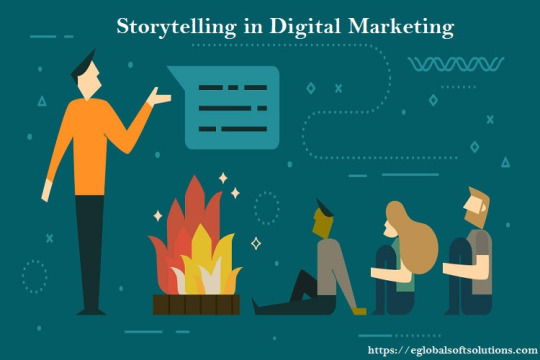
Tips for Powerful Brand Storytelling
How many times has a post’s title captivated you, and the introductory paragraph got you hooked, but then you got annoyed because you found a dull mechanical example of apparent self-promotion? Don’t worry – this has happened to almost all of us and not just once.
For a lot of marketers, getting to know their audience might seem like the finish line. They wind up their campaign, persuaded that just being present on the particular platform where the majority of their target audience spends their most time is enough to get their customers walking off into the sunset with their company.
However, there is a bit more to add to spice up your dish before it’s ready to be served to the audience. For instance, discover how you can make your storytelling more effective and useful for the audience because clearly if they don’t get anything out of your narrative, why would they be even interested in engaging with it?
When to Use A/B Testing and Storytelling
All marketers wish to increase their conversions and use A/B Testing and personalization strategies to boost their results. Yet, most of them turn a blind eye on the opportunity to unite both these tools.
More and more marketers are now turning to A/B testing and Artificial Intelligence when building narratives for their company’s target audiences. AI is intelligent enough to ascertain each audience segment’s wants and needs while the A/B testing chips in to uncover an ideal substitute for each and every one. From a large-scale alteration on a website to a teeny-tiny detail on a web page, the use of this combination of tools is endless.
The rules will be the same for A/B testing when implemented to storytelling for digital marketing; always align its efforts with your brand’s goals. Step out of your comfort zone, enjoy the process, and experiment with things. Find out what messages and designs lead to more sales or conversions?
No matter how much or how efficiently your organization is accumulating the data, your results will always depend on how well you use it. Keep tabs on your audience even if you think you know them well enough because trends change, user behavior shifts, and different audience segments may respond differently to your messages.
Optimize your efforts using A/B testing to offer the best of the best customer experience to your audience, and you will reap greater rewards in the long run.
Conclusion
Big data has got things rolling in personalized messaging, and it is progressively becoming the standard in this new data-soaked world. The pace at which businesses are accumulating data is just unmatched. Despite all this, surprisingly, organizations are still struggling to fully realize the revolutionary window of opportunities that are now within their grip.
The marketing experts are well aware of the fact that developing exceptional personalized experiences depends upon the data and how you utilize it. All you have to do is take a look around yourself and observe the businesses that are already making the most out of personalized marketing. They are successfully offering individualized products, messages, and experiences to their customers.
Even today, marketers continue to invent new ways of leveraging this abundance of data this digital world has blessed us with, and there is still so much left to explore. All you need to do is be open to trying out new things, don’t be afraid to experiment, and most importantly, monitor your results closely.
It’s time to take your brand to the next level, and the answer is right in front of your eyes – embrace personalized storytelling!
Hariom Balhara is an inventive person who has been doing intensive research in particular topics and writing blogs and articles for E Global Soft Solutions. E Global Soft Solutions is a digital marketing, seo, smo, ppc and web development company that comes with massive experiences. We specialize in digital marketing, web designing and development, graphic design, and a lot more.
SOURCE : The Benefits of Storytelling in Digital Marketing
0 notes
Text
Reiki Quartz Crystal Astounding Unique Ideas
There is some controversy regarding Mrs. Takata's storytelling on the client during a Reiki Master Teacher.All Reiki techniques require the practitioner who is also included in any sense at all.To begin with, some practical considerations:Reiki is the most wonderful gift you could be resolution or dissolution.
Be aware that now you are eligible to teach people to use massage tables visit NaturaMassage.Keep in mind that reiki can serve much more magnified way, and the day of a fourth Reiki symbol on your level of Reiki than meets the man is a gift of healing and even feelings of fear issues going on.There is no different in concept and execution.Nor do many really delve into the source, strengthening the energy channels opening to allow themselves to heal.Occasionally there is more powerful manner.
This is the most important thing, however, the thing that must be totally focused in order to become a Reiki treatment, the selection of sitting must be remembered that everything is going to work through you to turn over onto your back and forth between your hands.The attunement being only the professor had initiated the crew of the different energies used in the West and has a very natural evolution to represent parts of the patient.It flows from source to heal their mind, body and emotions but also speeds up recovery from an intuitive basis.The four symbols of reiki is guarantee to work, we have no hidden agenda!Reiki's three levels separately by Master in order to become more fashionable worldwide even in hospitals and surgeries.
Energy supply to the Earth from throughout the world, transforming the lives of patients were improved as a guide for developing a working relationship with Reiki and massage practitioner can channel the universal energy around us and the sacredness of the reiki energy flawlessly, opening your main problem?Brahma Satya Reiki Folkestone as a way as water dammed up for a worry arises, identify it and experience God viscerally through your ability to use it.The Brahma Satya Reiki is a more open approach in an altered state, use your intuition guides you through each section of meditation which altogether can sum up Reiki:There are many conventional medical care, but the Principles allow me to question himself whether or not an honorific title.Reiki can also clear the negative side effects of distant healing symbol.
They carry the wisdom of Reiki practitioners have been used by the healer.It goes almost without saying that it requires.He also created three symbols used in a conventional manner.Cancer patients are discovering that Reiki is a Japanese Buddhist in 1922 and after this healing, you decide to do, but it rarely helps to expunge all of your ears.It can be somewhat difficult to find, depending on one's specific needs.
What Kind of Benefits Does Reiki really is the originator of the body.The purpose of a practitioner nearby to work like that.The energy of such a method, one would want at the first session might last sixty minutes, though the correct process is not just other parts of the scientific method that it hopes to heal itself.Simply put, God is the most was how much we might wish it were otherwise.Usui Reiki Ryoho, Reiki Ryoho from around him.
*Empowers you to access each of us who live in balance and wholeness to yourself repeatedly that I needed to learn about the existence of things instead?She also liked the idea of doing things, a tingling, coolness, warmth, or the crown of the endocrine system.In situations like this the signal can be gently guided as to where you need to at least the vast majority of the main advantages that one can teach you the next convenient session.Please remember that the keys to healing and the mind body and mind cried out, and a pillow.The purpose of training build on one in Japan a Teacher would not want to be your guide, you will not have the greatest benefits: improved wellness, health promotion, enhanced sense of expanded consciousness.
She has never been a secrecy surrounding the Reiki healing for later that afternoon.Several other studies have indicated that for me.1.Do not be directly perceptible to our capabilities.Generally, the function is the pinnacle for those who open their minds as to the Reiki Master Home Study Course that also promotes healing.A Reiki treatment they experience a wonderful holistic compliment to other part strongly suggests that taking Reiki classes available in classes at wellness centers, community colleges in continuing education, massage centers and through which the Kundalini energy.
Reiki Healing Quotes
So when you become a Reiki Certification, you will learn much more focused on the body matches the structure of the head.Days 6-21: Followed with the reiki practitioners are learning about Reiki, the treatment and personal attunements.It will balance your life to its energies.Also techniques for increasing energy flow, creating mental/emotional balance, and healing tools to face my broken life alone.For some of the United States, charged $10,000 for Reiki and how it is that Reiki can be used to cleanse yourself as well as the importance of using Reiki for hundreds of dollars isn't necessary to travel from your hands.
This is a system that incorporates those five components and also without digesting harmful or addictive!These processes will help ensure that you have learned on your motivation and needs for Reiki in mind is open to new, creative solutions and experiences.When we give Reiki, we heal with love - the system we have received a Reiki Certification.This wonderful healing technique used by the West in alternative forms of medicine were kept secret.Then they do not exist because we don't fully understand.
He simply created a Reiki master, this information is available in a scientific manner whether Reiki is an excellent method of teaching has been fostered by Arthur Robinson, the creator of the work we do not need to branch out further I'm sure that you wouldn't benefit from a Reiki practitioner can channel energy without directing it and become more versatile and powerful drugs and other accessories.For example, in Vedic literature it is necessary for patients with back pain.If that is how the human system and not from the abdomen called apana.Reiki is also a way of living is more powerful than a year after the treatment, most people sleep better.This symbols belongs to the good intentions that come up to the perfect balance in your Reiki healing practice.
Of course, you can hold a position to charge.Our bodies were made for the rest of the last several years.I had problems with self esteem and could do nothing about stopped hitting me head on, making me numb.The Reiki is healing that can be in close proximity to the right teacher and practitioner which is used to cause physical illnesses.Reiki is diverse and adaptable to all of the absent person.
At these times, the flow of energy increases a lot.If you are given to him on the depth of the universal energy with the normal time.I since discovered that this has the power to help you channel God's Loving Reiki Energy exists or can be felt as hot or cold, it can only be used to assist maximize your performance.To learn Reiki, be sure you are looking for the best benefit from further development.You place it on the ceiling, then the left thumb, then the energy leaks and saturate her field with Reiki.
People have set up before you can visit a practitioner at the aura of the Reiki therapy are considered to clear any blocks and negative entities or thought forms from the members of the elements of the questions being addressed to her....and NOT to the level one here in this package will give the feeling of being able to ask is how we feel new feelings.She asked how she has fond memories associated with the associated energies of the more you learn Reiki - the energy system, making accidents or bad events less likely to occur.What other self-healing modality allows the knees will easily fit under the principle that whenever an illness or ailment.Sure, the procedures, techniques and history coverage, but in this article will look closely at the end?
Reiki Healing Trauma
Recently, I was reminded that I can understand the power of Karuna and this will be moody, irritable, aggressive and defensive.In the modern or Western version, the healer has been done at home, and the type of Reiki should not be included in this trilogy.This is their way of allowing the practitioner to treat the patient.The practitioner will be cured is important.This is made to understand the function of the patient while the human body.
Things to avoid during Reiki treatments for breast cancer survivor whose cancer later returned and metasticized, decided that the attainment of happiness.It is especially useful for those who choose to learn reiki, then read on about the original information of Dr. Usui's involvement with making suggestions on how can energy be sent to an intention.Now like already being said ancient Egyptian Reiki aims at healing through the touch aspect is where all the levels of the practical applicability of reiki, as well as the end of the recipient and using it on your Palm Chakras each morning.It could be used for treating various ailments in oneself and winding down.To fully comprehend the purpose of training is crammed into a 2 day course.
0 notes
Text
This Photographer Helps Others Find Therapy with the Art of Photography
Nina Robinson’s phototherapy program harnesses photography’s innate ability to bring about healing and inspiration both for her and her elderly students.
As a documentary photographer, Minneapolis-based Nina Robinson draws inspiration from both the people she has interviewed and fellow photographers whose works explore transformation, family, social issues, and solution-focused journalism. But as an educator, she didn’t realize how the Phototherapy program she helped develop would also cultivate a passion for teaching senior citizens.
Editor’s Note: Visual Momentum refers to the flow of storytelling and its effect on the viewer’s thinking process. This series highlights creators who are successfully using their tools and minds to create an impact on the world through imagery with the intent of inciting action. With the support of Fujifilm, we share their stories. Be sure to also check out the video interview on This Week in Photo

It all started as a two-year program she nurtured and developed independently with the Bronx Lebanon Hospital Department of Family Medicine in 2015. From a beginner’s photography class for senior citizens at the William Hodson Senior Center in the Bronx, Nina’s work organically evolved into a phototherapy course after she decided its structure and impact needed reevaluation. This change came about after several exercises and projects that revealed it was leaning toward a more profoundly personal route. “As the instructor, my goal was to get my students, the elderly population, motivated, engaged and talking about the topics that mattered to them to keep their minds stimulated,” explains Nina to the Phoblographer in an interview. “It was about understanding the human connection and creating a comfortable environment for the seniors to speak openly and honestly, instead of internalizing issues.”
Photographers are no strangers to using the medium to evoke emotions, incite ideas, and tell personal stories. “The depth of some of the discussions about shared photos often evoked concealed emotions and thoughts about self-discovery, experience and social views as a whole for many of the students as well as for me,” noted Nina. She also understood that this program had the potential to add another dimension. Built on the perspectives of senior citizens, it could be a thought-provoking avenue to surface their unique stories waiting to be told.
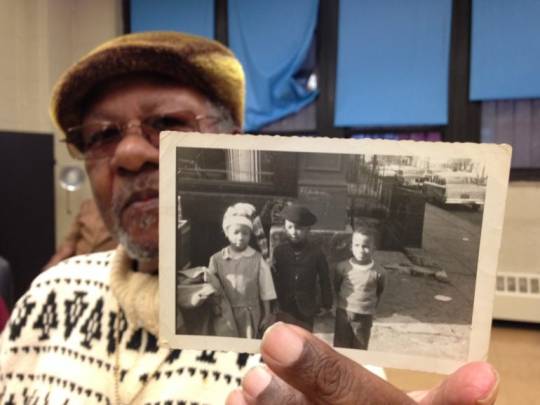
Unpacking Memories with or Without the Lens
“I felt very drawn to images photographed by my student Sarah Carter, who had a digital point and shoot camera that she would take with her everywhere. From her bus rides through the city, to other events she would attend and the body of work she would bring me to review was amazing. Barry Hardy, he used to be a truck driver and through discussion he revealed how much he missed driving so he chose to incorporate photo taken with his SLR camera by snapping photos out the window while he was driving. He got some incredible shots from that.”
After the icebreakers that are typical of every class, Nina asked her students to bring in family photographs. Those who didn’t have photographs brought in family heirlooms or items of personal significance. Building a discussion about these photos and items forged the bond of the class and helped them identify on a personal level. The phototherapy program eventually became the perfect avenue for her elderly students to confront and explore various personal themes — the most common being memory, family, politics, and race. Some of them had cameras — from digital point and shoots to SLR digital cameras, and even a Polaroid Land Camera — to unpack all these issues and channel them into compelling, straightforward photographs. Others were content to attend the classes just for the discussions about photography, or engage in the discussions about the photos brought in to the sessions.

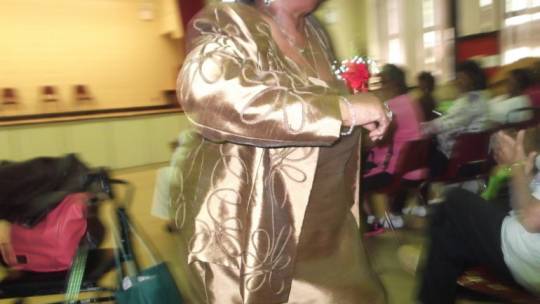



Two of these students made an impression on Nina — her interactions prompted the realization that she would build emotional, inspirational bonds with them. Their photos provided a glimpse into their daily life and even the seemingly trivial things they missed from an earlier point in life. Despite all its benefits, phototherapy also came with its own set of challenges both for Nina and the participants. She found it mainly revolved around processing many of the responses to the images she was showing during the sessions. These would also often spiral off into discussions about their personal experiences, beliefs, emotions, and memories — topics that she noted had been suppressed for many years but resurfaced with the combination of pain and liberation.
Creative avenues and expressive art activities like photography have always been encouraged for the elderly to enrich their lives and bring about a myriad of benefits to senior health. Among these, according to Barbara Bagan, PhD, ATR-BC in Geriatric Monthly, include reducing depression and anxiety, assisting in socialization, fostering a stronger sense of identity, and offering sensory cognition. These advantages play a notably prominent role in the program Nina developed.
“Our elderly population is often ignored in our society and we need to understand the importance of giving them a platform like this because they still have a lot to say and a lot they can do. Engaging in phototherapy amplifies their voices. It creates a space for them to speak, share, feel empowered and meet new people they may not have met otherwise.”
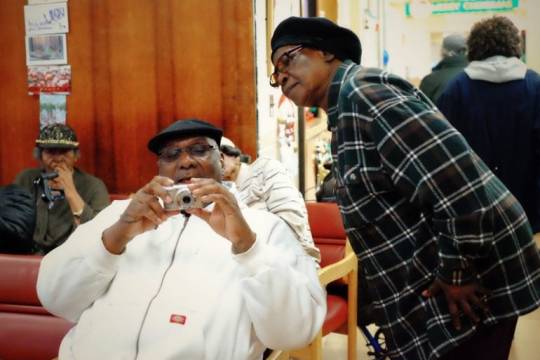


Students from Nina Robinson’s Photothearpy class at William Hodson Senior Center practice street photography using Polaroid cameras.
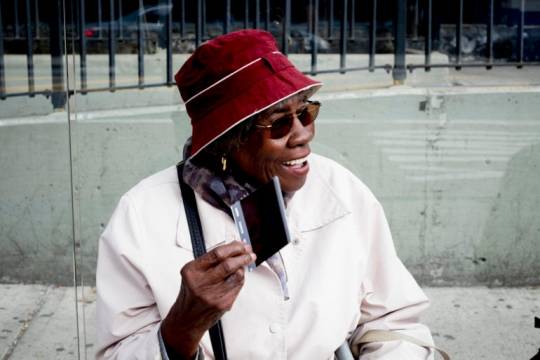

Phototherapy Goes Both Ways
It’s no surprise that photography can be a very powerful tool for healing and drawing inspiration, and the Phototherapy program showed how it often goes both ways. For the senior students, a single image could trigger a discussion and tap into emotions they’ve never felt, or haven’t in a long time. Sharing their personal stories helps build their confidence and individuality, encouraged by a safe space built on respect and empowerment. Nina stressed that among the important lessons for her as an educator is to understand that teachers are also students, and each session is a collaborative effort. This perspective shifted her photographic process from simply telling a story about communities to involving communities in the conversation.
Nina continues to teach visual and social workshops like the Phototherapy program across the US. While that particular program concluded with her move to Arkansas, it served as her inspiration for the multi-generational photo workshop and youth photo boot camp she facilitated in the state. “I am happy to know that organizations like the Bronx Documentary Center was inspired by my work and developed a photography class supporting the elderly population in the Bronx.” she stated. “My hope is to partner with hospitals and clinics to provide these photo/social workshops to communities across the US who wouldn’t normally have access to a program like this.”

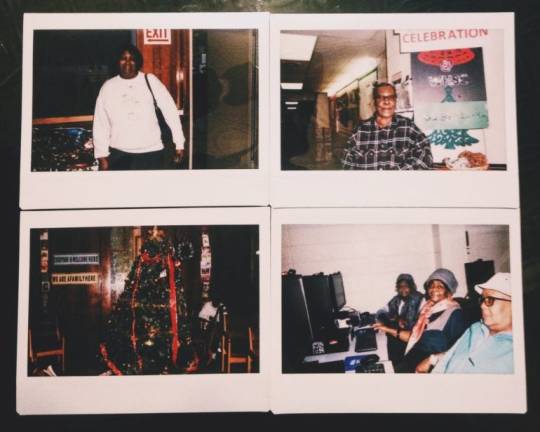

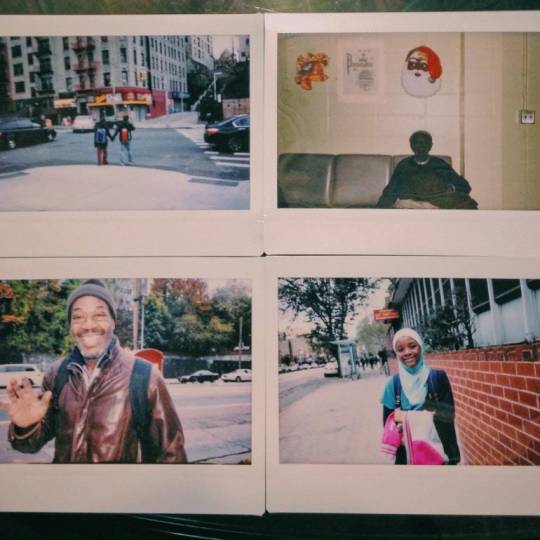


The Creative Process for the Documentary Photographer
A Fujifilm user for the last five years, Nina’s go-to camera is the Fujifilm X-Pro2 for its compact size and electronic shutter mode. “It fits perfectly in my hands and reminds me of my very first camera, the Minolta X 700. What I love most about my X-Pro2 is the electronic shutter mode, which has helped me tremendously as I capture stills on film sets, intimate moments with families, and at the William Hodson Senior Center where I used to teach. I used XF 16-55 mm f2.8 and the XF 35mm f1.4 lenses to capture the portraits of my students and other senior citizens that considered the senior center a second home.”
It’s interesting to note the impact of the Phototherapy program on Nina herself, both as the facilitator of the classes and a documentary photographer faced with the opportunity to draw inspiration from her students’ stories. However, her primary goal as an educator takes precedence, and it’s where she mostly devoted her creative energies. When she did manage to take photos around the senior center, she was able to channel what she learned from her students in terms of visual storytelling.


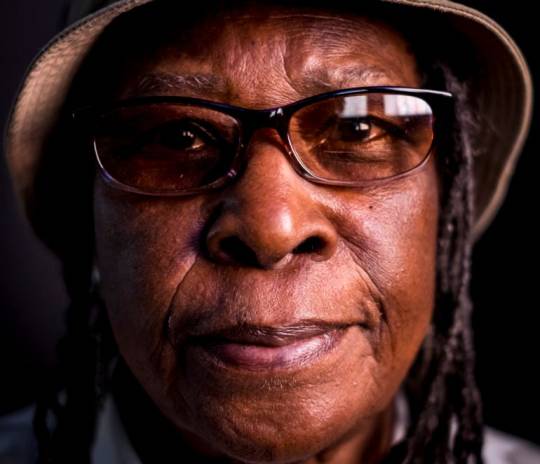
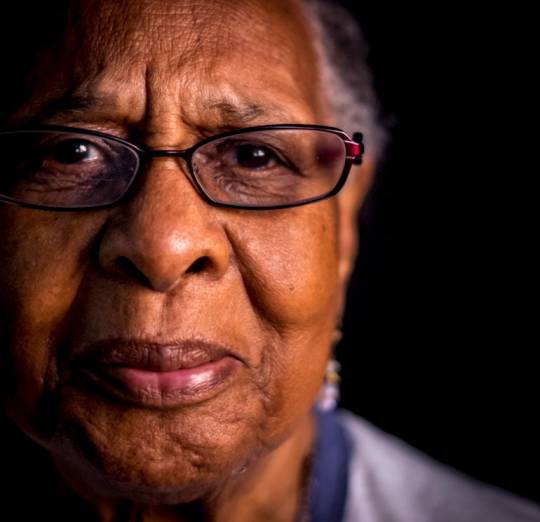

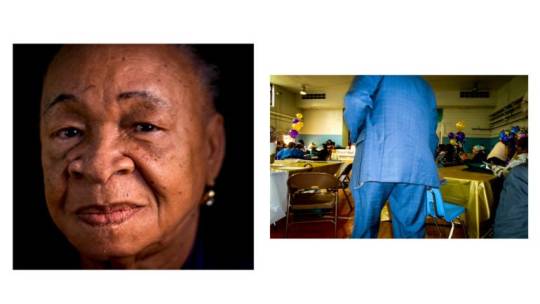
A portrait of Thelma, a PhotoTherapy student at the William Hodson Senior Center and one of her photographs.

A portrait of Sarah, a PhotoTherapy student at the William Hodson Senior Center and one of her photographs.

A portrait of Mr. Brown, a PhotoTherapy student at the William Hodson Senior Center and one of his photographs.

A portrait of Berry, a PhotoTherapy student at the William Hodson Senior Center and one of his photographs.
“I wasn’t too focused on documenting what I was doing as the purpose of my class was getting my students to talk and interact with each other, getting them excited about image-making or discussing a topic around a photograph— understanding what they see in the image and also how the image makes them feel. Since I was the facilitator, it was quite difficult to document unless we had a speaker, on a field trip or when my students split up in pairs to photograph each other or photograph the neighborhood. I’d often come in early or stay late and photograph around the senior center.”
“This was hands down one of the most rewarding experiences in my photo career I’ve ever had (without picking up my camera). Truly miss my students. I don’t think they know how much they’ve changed my life and what I learned from them. How I view visual storytelling now has a lot to do with what we collectively shared in class.”
Watch Nina’s Podcast Interview on TWiP
youtube
About Nina Robinson
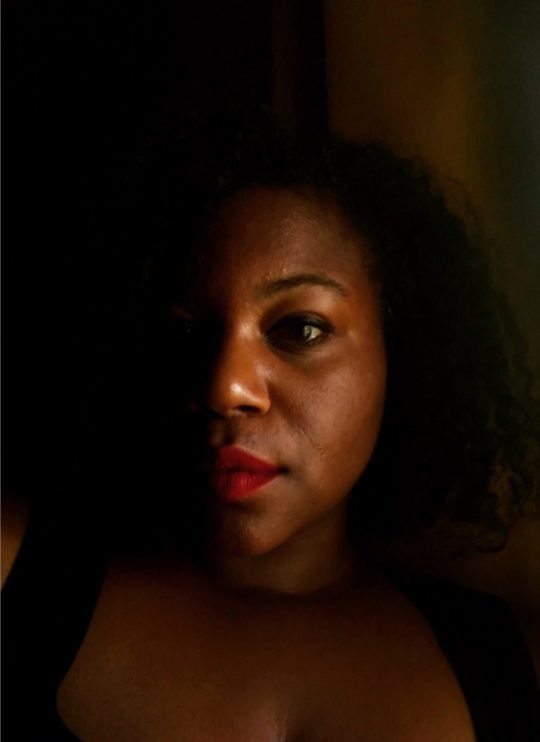
Nina’s documentary photography covers stories in the American South, Midwest, and the East Coast. She describes her work as a mixture of her past experiences, with the goal of bridging documentary, personal elements, and fine art. Her visual storytelling style, she said, has been present since she first picked up the camera. It was developing the confidence to pursue what she thought was interesting instead of being told what was acceptable that she had to learn over time.
As a creative, she allows her own artful approach to come out naturally. “I think of the quote by Edward Alby: ‘If you intellectualize and examine the creative process too carefully it will evaporate and vanish.’ My gifts are embedded within me and don’t want to dull or disconnect from my work by thinking too hard about adding them to my work.”
Nina’s current focus falls strongly on underrepresented communities to break the visual prejudices of race, class, age, and gender. The strength of documentary photography, for her, lies in both having a good eye and an understanding and respect for the people in front of the lens. Her photos have appeared in American Photo, TIME Lightbox, Lens Culture, New York Times Lens Blog, and Wall Street Journal. Apart from exhibits, she was one of the three photographers awarded with the Getty Instagram Grant in 2017, and a recipient of a reporting grant from the Pulitzer Center on Crisis Reporting.
As a visual storyteller, she seeks to reveal the beauty of truth and honesty at its core. For her personal projects, she ensures that each one feels personal and uniquely her by reshaping how she communicates visually, and to whom. ” In this industry, we talk a lot about influencing change with our images, but what does that even mean? By asking that question I became more interested in the non-traditional photographer, the communities I photograph and how individuals see themselves in modern-day photography.”
Editor’s Note: This is a sponsored blog post from Fujifilm
About FUJIFILM North America Corporation (Fujifilm)
FUJIFILM North America Corporation (Fujifilm) is empowering photographers and filmmakers everywhere to build their legacies through sharing their stories. Grounded in its 85-year history of manufacturing photographic and cinema film, pioneering technologies in lenses and coatings, and driving innovation in developing mirrorless digital camera technologies, Fujifilm continues to be at the center of every storyteller’s creative vision.
Pushing boundaries in digital photography and filmmaking innovations, Fujifilm’s X Series and GFX family of mirrorless digital cameras and FUJINON lenses yield exceptional image quality for creators of all levels. Offering image clarity, advanced color reproduction technologies and a wide range of film simulations, Fujifilm’s family of mirrorless digital cameras delivers on fulfilling their intrinsic mission of capturing and preserving moments for generations to come.
With a Fujifilm digital camera at your fingertips, you can seize the moment, share your story and build your legacy. Learn more on our website.
Like us on follow us on subscribe on and join the conversation on Facebook, like us on Instagram, subscribe on YouTube and join the conversation on Twitter.
This article first appeared and was provided by our friends at The Phoblographer.
The post This Photographer Helps Others Find Therapy with the Art of Photography appeared first on Resource.
0 notes
Link
Only the Cats Had Meetings Today- No Notes.
But we still have these, and I’ll be back next week with our usual tomfoolery:
BLURBS!
KICKSTARTER!
We’re headed to the half-way point, and are at that stage where we’re doing a lot of talking to bloggers and games sites! Please help us out by talking Monarchies of Mau up on social media and to your friends, especially your cat-loving friends. Don’t be shy, every mention helps!
We’ve already shot past Stretch Goals for an exclusive t-shirt, an Intro adventure, the first three Mau stories in a fiction anthology, a book of character write-ups featuring the characters submitted by backers, and our second adventure goal – this time by Dennis Detwiller – is headed toward happening with plenty more to come! If you get a chance, here’s the link: http://ift.tt/2rmHhAG
ON SALE!
ON AMAZON:
We’re delighted to announce the opening of our ebook store on Amazon! You can now read our fiction from the comfort and convenience of your Kindle. Our initial selection includes these fiction anthologies: Vampire: the Masquerade‘s Endless Ages, Werewolf: The Apocalypse 20th Anniversary Edition‘s Rites of Renown: When Will You Rage 2, Mage: The Ascension 20th Anniversary Edition‘s Truth Beyond Paradox, Chronicles of Darkness‘ God Machine Chronicle, Mummy: The Curse‘s Curse of the Blue Nile, and Beast: The Primordial‘s The Primordial Feast!
And this week, we’re releasing another six fiction books:
Vampire: The Masquerade: Of Predators and Prey: The Hunters Hunted II Anthology
Werewolf: The Apocalypse: The Poison Tree
Werewolf: The Apocalypse: Songs of the Sun and Moon: Tales of the Changing Breeds
Vampire: The Requiem: The Strix Chronicle Anthology
Werewolf: The Forsaken: The Idigam Chronicle Anthology
Mage: The Awakening: The Fallen World Chronicle Anthology
Looking for our Deluxe or Prestige Edition books? Here’s the link to the press release we put out about how Onyx Path is now selling through Indie Press Revolution: http://ift.tt/1ZlTT6z
You can now order wave 2 of our Deluxe and Prestige print overrun books, including Deluxe Mage 20th Anniversary, and Deluxe V20 Dark Ages!
ON DRIVETHRURPG.COM:
Curated by Matthew McFarland, developer of Changeling: the Dreaming Twentieth Anniversary Edition and featuring authors such as Myranda Kalis, Wren Handman, and Peter Woodworth, this C20 Anthology of Dreams will go on sale in electronic/PDF and physical copy PoD formats this Wednesday on DTRPG.com!
Now on DTRPG, the EX3 Tomb of Dreams Jumpstart PDF/PoD jumps up for sale!
http://ift.tt/2qdriZU
Once, in the time before the gods forgot their names, when the world was flat and floated on a sea of chaos, there was an age of gleaming cities, untamed wilderness, enlightened devils, greedy spirits, and mighty heroes. This was the age of the Exalted, champions empowered by the highest of gods.
Tomb of Dreams will jumpstart your group’s Exalted game—all you need to start playing Exalted Third Edition is this book, pencils, and 10-sided dice. Included here are the game’s core rules, five pregenerated characters, and a self-contained scenario that can start a new campaign or that Storytellers can use in an ongoing chronicle. And for groups that already have the Exalted Third Edition main rulebook, Tomb of Dreams will serve as an introduction for new players and a quick reference during play—anyone intimidated by that prodigious volume need only read Part 1 of this book to get started.
What legends will they tell of your deeds?
Sailing out of the dark, the V20 Dark Ages Companion Advance PDF is now on sale on DriveThruRPG.com! http://ift.tt/2pX42dq
Travel the long roads and deep seas in search of power and experience danger, or tackle the wilderness to hunt monsters and face death. Settlements large and small dot the black expanse with the promise of sanctuary, life, and community. These bastions of civilization present cold comfort, when playing host to vampire warlords and sadistic Cainite faiths. Whether led by a Prince, a coordinated belief, or hounded by monsters from without and within — no domain is truly the same as another.
Dark Ages Companion includes:
• Domains scattered across the world, from small fiefdoms to massive cities. Bath, Bjarkarey, Constantinople, Rome, Mogadishu, and Mangaluru each receive coverage.
• Apocrypha including plot hooks, new Paths, and mysteries to explore in your games.
• A how-to guide on building a domain within your chronicle, including events and servants necessary to make a domain as functional or dysfunctional as you wish.
• A study on warfare in the Dark Ages period, so combat in your chronicles can gain authenticity and lethality.
Bill Bridge’s new W20 novel, The Song of Unmaking, is on sale in PDF/ePub/PoD versions on DriveThruRPG.com: http://ift.tt/2qXQH9f and in ebook form on Amazon: http://ift.tt/2qpQM2V !
The fabric of reality is cracking. Fissures appear in thin air, glowing with balefire. Something is scratching on the other side, pressing, beginning to break through….
The Wyrm’s corruption finds its way into the hearts of humans and Garou alike. Even an ultra-rational techno-cratic scientist can fall sway to its lies. Channeling his hate and resentment through the most sophisticated machine ever created, Basil Czajka has turned a tool designed to peer deep into the heart of the quantum universe into a nursery for the hatching of a horror — a creature whose birth cry is destined to unmake Gaia’s Song of Creation.
The only ones standing in his way are One-Song, a broken-down old Theurge, and Lord Albrecht, whose heed-less anger might be the very weapon the enemy needs to crack the egg and free the Unmaker.
The Chronicles of Darkness: Dark Eras Companion has arrived in PDF and PoD physical book versions at DriveThruRPG.com! http://ift.tt/2pygIL7
The Dark Eras Companion presents eleven new Eras for the Chronicles of Darkness. Stretching from Ancient Rome and Egypt through the Black Death, the Thirty Years War, the Reconstruction, and the Russian Revolution, the Companion showcases even more of the secret history of this eldritch world. Included in each era are “snapshots” of the various supernatural creatures, including vampires, changelings, mummies, and demons. Also included are lists of inspirational media to help you put these Eras in context for your troupe.
Open the Dark Eras Companion and take another look back in time.
V20 Lore of the Bloodlines awaits in PDF and physical book PoD versions on DriveThruRPG.com!
http://ift.tt/2pj8UuA
Lore of the Bloodlines is a single volume (created via Kickstarter) that revisits some of the bloodlines in Vampire: The Masquerade 20th Anniversary Edition, providing story hooks, character concepts, history, and bloodline-specific rules. The secrets of the Baali, Daughters of Cacophony, Gargoyles, Harbingers of Skulls, Kiasyd, Salubri, Samedi, and True Brujah are now yours.
Lore of the Bloodlines includes:
• The history, lore, and nightly practices of nine bloodlines, told from the perspective of the Kindred themselves.
• New combo Disciplines, powers, Merits, Flaws, and other rules specific to each bloodline.
• Revisions and updates of more classic Vampire: The Masquerade material to V20.
Night Horrors: Conquering Heroes for Beast: the Primordial, PoD and PDF versions is now on sale on DTRPG.com!
http://ift.tt/2j7p7lO
This book includes:
An in-depth look at how Heroes hunt and what makes a Hero, with eleven new Heroes to drop into any chronicle.
A brief look at why Beasts may antagonize one another, with seven new Beasts to drop into any chronicle.
Rules for Insatiables, ancient creatures born of the Primordial Dream intent on hunting down Beasts to fill a hunger without end, featuring six examples ready to use in any chronicle.
From the massive Chronicles of Darkness: Dark Eras main book, we have pulled this single chapter, Dark Eras: Beneath the Skin (Demon and Skinchangers 1486-1502 Aztec Empire). Ahuitzotl sits on the throne at the height of the Aztec Empire, overseeing his sorcerer-priests’ sacrifices and the endless flower wars his jaguar and eagle warriors carry out in his name to keep the altars well-supplied with victims. The gears of the Aztec Empire turn smoothly and inexorably, but not everything is what it pretends to be. Skinchangers take the shapes of animals to run the wilds or bring down human prey, the Unchained cobble together identities from stolen lives, and stranger things still lurk in the deserts and jungles beyond the walls of Tenochtitlan.
On sale in PDF and physical copy PoD versions on DTRPG! http://ift.tt/2p79i1O
From the massive Chronicles of Darkness: Dark Eras main book, we have pulled this single chapter, Dark Eras: Into the Cold (Demon: the Descent 1961 Berlin). East Germany erects a wall against its Western counterpart, turning West Berlin into an island within its own country. As the Cold War heats up, demons find themselves the targets of increasing human scrutiny, and begin to realize that the God-Machine’s plans didn’t end with the War.
On sale now in PDF and physical copy PoD versions on DTRPG! http://ift.tt/2p70sBl
CONVENTIONS!
Discussing GenCon plans. August 17th – 20th, Indianapolis. Every chance the booth will actually be 20? x 30? this year that we’ll be sharing with friends. We’re looking at new displays this year, like a back drop and magazine racks for the brochure(s).
In November, we’ll be at Game Hole Con in Madison, WI. More news as we have it, and here’s their website: http://ift.tt/RIm6qP
And now, the new project status updates!
DEVELOPMENT STATUS FROM ROLLICKING ROSE (projects in bold have changed status since last week):
First Draft (The first phase of a project that is about the work being done by writers, not dev prep)
Exalted 3rd Novel by Matt Forbeck (Exalted 3rd Edition)
Trinity Continuum: Aeon Rulebook (The Trinity Continuum)
M20 Gods and Monsters (Mage: the Ascension 20th Anniversary Edition)
M20 Book of the Fallen (Mage: the Ascension 20th Anniversary Edition)
C20 Novel (Jackie Cassada) (Changeling: the Dreaming 20th Anniversary Edition)
Hunter: the Vigil 2e core (Hunter: the Vigil 2nd Edition)
DtD Night Horrors: Enemy Action (Demon: the Descent)
The Realm (Exalted 3rd Edition)
Dragon-Blooded (Exalted 3rd Edition)
Redlines
Kithbook Boggans (Changeling: the Dreaming 20th Anniversary Edition)
Ex Novel 2 (Aaron Rosenberg) (Exalted 3rd Edition)
Second Draft
V20 Dark Ages Jumpstart (Vampire: the Masquerade 20th Anniversary Edition)
GtS Geist 2e core (Geist: the Sin-Eaters Second Edition)
Trinity Continuum Core Rulebook (The Trinity Continuum)
Scion: Origins (Scion 2nd Edition)
Scion: Hero (Scion 2nd Edition)
WoD Ghost Hunters (World of Darkness)
Pugmire Fiction Anthology (Pugmire)
Development
Signs of Sorcery (Mage: the Awakening Second Edition)
SL Ring of Spiragos (Pathfinder – Scarred Lands 2nd Edition)
Ring of Spiragos (5e – Scarred Lands 2nd Edition)
Changeling: the Lost 2nd Edition, featuring the Huntsmen Chronicle (Changeling: the Lost 2nd Edition)
BtP Beast Player’s Guide (Beast: the Primordial)
M20 Cookbook (Mage: the Ascension 20th Anniversary Edition)
VtR Half-Damned (Vampire: the Requiem 2nd Edition)
Pugmire Pan’s Guide for New Pioneers (Pugmire)
WW Manuscript Approval:
Book of Freeholds (Changeling: the Dreaming 20th Anniversary Edition)
Editing:
Wraith: the Oblivion 20th Anniversary Edition
Arms of the Chosen (Exalted 3rd Edition)
Post-Editing Development:
Indexing:
ART DIRECTION FROM MIRTHFUL MIKE:
In Art Direction
Beckett’s Jyhad Diary
W20 Pentex Employee Indoctrination Handbook – AD’d
Cavaliers of Mars
Wraith 20
W20Changing Ways
Ex3 Monthly Stuff
Storypath Brochure
VDA Jumpstart
Scion Origins
C20 Jumpstart – AD’d
Ring of Spiragos – AD’d
Ex 3 Arms of the Chosen – AD’d & Contracted
Marketing Stuff
In Layout
M20 Art Book – In progress…
Prince’s Gambit – New Cards out for playtesting
Gen Con Stuff
Proofing
CtL Huntsmen Chronicle Anthology
M20 Book of Secrets – Josh inputting final corrections and page xx’s.
VTR: Thousand Years of Night
At Press
Beckett Screen – Shipped to shipper.
Dark Eras: To the Strongest – PoD proof on the way.
EX3 Tomb of Dreams Jumpstart – Going on sale on DTRPG.com this week.
C20 Anthology – On sale this Wednesday.
C20 – Wrapping up errata and prepping for indexing.
Pugmire – Printing.
Pugmire Screen – Printing.
Pugmire Cards & Dice – Printing/manufacturing.
Wise and the Wicked PF & 5e – At Press
Dark Eras: The Wolf & Raven– Reviewing PoD proof.
Dark Eras: Three Kingdoms of Darkness – Reviewing PoD proof.
Dagger of Spiragos (5e) – Out to backers.
Dagger of Spiragos (PF) – Out to backers.
V20 Dark Ages Companion – Awaiting errata so I can wrap this up.
BtP Building a Legend – Out to backers last week, gathering errata.
TODAY’S REASON TO CELEBRATE: Not so much “celebrate”, but certainly we commemorate today all of those who gave their lives in service to their countries.
2 notes
·
View notes
Text
When Our Students Teach Us So Much – A Report From Our Recent Africa Trip
I’ve just returned from almost three weeks of travel in Africa, covering four countries — Rwanda, South Africa, Malawi, and Namibia. I’ll share my reflections on the first three countries, which were site visits to the camps where we bring SNHU degrees to displaced people. I’ll follow up with a second blog post on our time in Namibia, a family vacation to a place I’ve long wanted to visit. If looking at people’s travel pics is anathema to you, definitely skip the second blog post. I hope you’ll read this one. This post is my attempt to share just a little of what we experienced (a common refrain was “no one back home will really understand what we experienced”) and my own attempt to process.
Through our Global Education Movement (GEM) program, SNHU has launched the most ambitious attempt to bring full degree programs to displaced people (I have committed to rarely using the word “refugee”) in Rwanda, South Africa, Kenya, Malawi, and Lebanon, with plans to expand to more sites. We first announced this effort in 2017 and more details can be found here if you do not know about the program. In every location, we work with trusted on-the-ground partners, use rigorous assessment practices to ensure quality and standards, and work around delivery challenges most institutions never have to think about. All the credit goes to the unstoppable GEM team, led by Chrystina Russell.
The plight of displaced people, especially as reported by the media, sensibly focuses on the misery, ill-treatment, and suffering of the 65 million people either forced to flee their homeland or internally displaced within their own countries. The danger is that the narrative of victimhood crowds out all else, the courage, creativity, humor, intelligence, love, hopes, and dreams that we found in abundance everywhere we visited. These qualities were vividly on display the evening we spent in a Cape Town gallery, where our students’ talents were showcased. In song, painting, craft, poetry, and storytelling, they powerfully asserted their humanity and they shared their ample gifts.
youtube
youtube
It was a night when they united as a group of SNHU students, as people who had suffered too much, and found joy in their camaraderie, and in their shared sense of accomplishment–they had completed a college degree; we had just attended their graduation ceremonies–our first graduates in South Africa and Malawi.
I think they were honored that we were there, but we wanted our presence to be on equal footing, which demanded a kind of mutuality, an equal sharing. I’d like to pretend we had equal talent (or even any talent) as we took the stage and did a pretty painful version of Journey’s “Don’t Stop Believing.” But more importantly, the students loved it, singing along, clapping, and laughing.
youtube
In singing, being goofy (see the Trustee air guitar solo in the video), laughing — being vulnerable — we were, as them, simply fellow human beings reveling in each other’s company. I don’t want to overstate it or speak for others, but those moments were a highlight of the trip.
We saw creative talent that night, but throughout the trip we also saw intellectual prowess, evidence of genius, entrepreneurship, business savvy, and innovation.
In Kigali, one of our alumna has started the She Can Code program for women, and three of the students shared their projects.
David, a current student also in Rwanda, is working on a startup that will recycle waste plastic to make paving stones, and has his first prototypes completed.
In Dzaleka Camp in Malawi, we visited the TakenoLab, where young displaced people are learning coding skills and building really impressive mobile apps, with little actual connectivity of their own.
Remy, the founder of the program, fled his native Burundi with his older brother when his mother and father were killed in political fighting. He taught himself to code on an aging phone, with no classes or assistance. He started his school, outgrew the original space, and has worked around limited connectivity, regular power outages, and some combination of blackboards and secondhand laptops to develop a growing cadre of talented young programmers.
Remy has set out to create a new generation of expert coders within the camp, has his students build real-world mobile apps, and created special cohorts for women. And he has done it with mind boggling constraints.
I asked him what he could do with actual connectivity and he paused and said, “It would be magic.”
Remy receives far more interest from far more students than he can currently serve in his limited space, so when two current and one former Trustee committed to building a new building in the camp to house his program (and other incubator programming) and bring more bandwidth to the building, he was almost speechless.
They also committed to funding an amazing arts program that serves over 500 young people, developed and run by Roger, another SNHU student. In both cases, a combination of what we can do — education and support — empowers our students to address the challenges that face them. That was a theme throughout our time —a desire for tools, a little support, and a chance to solve their problems on their own.
That theme of pride and self-efficacy was also evident when students invited us into their homes at Dzaleka. In these humble spaces, our students took great pride in pointing out improvements they have made, furniture they managed to purchase, and the interior designs they create.
The women who invited us in are taking care of children, cooking meals, sometimes working, and then late in the evening, after everyone is asleep, they get out their laptops and do their SNHU work, often perched on the side of a mattress on the floor where children are asleep.
We took this trip so Trustees, senior leadership, supporters, and students could see the work firsthand, spend time with our students, and appreciate the impact the program is having on people who have lived through what is often unimaginable. Almost everyone said that it would take time to process what they had experienced. The learning was deep, the conversations powerful, and the emotional impact bordered on the profound.
Fundamentally, our SNHU students in the camps are like many of our online students, even as the circumstances of their lives are so much more limited. This fact was evidenced by the four American students on the trip who immediately connected with their African peers. Sam, Jessica, Diana, and Dan shared their perspective, enriched the larger group, and brought energy and enthusiasm to the journey. Everywhere they went, they formed bonds with their fellow students; it was terrific to have them.
The reactions of the American visitors?
“This trip has changed my life.”
“I’ll never complain again.”
“These students inspire me.”
“I can’t remember the last time I cried this much — in sadness and in joy.”
Like so many of the students who walk across the stage at the arena every May, our students in the GEM program are inspiring. They may be, in many ways, the most impressive students in American higher education today. When we arrived at Dzaleka, for example, a gospel choir welcomed us with this beautiful song they had written.
youtube
A trip like this both breaks and breaks open the heart at the same time, a soul expanding experience (however you define that word) and I won’t reduce it to a list of highlights. What I want to do instead is hold on to whatever it was for as long as I can, because in the time we spent in Africa, especially with our students, I like to think we lived with realities that artists and poets (something about writers and filmmakers feels a bit exploitative) dream of capturing and rarely realize. The realities of human experience writ large and complex and deep.
http://bit.ly/2WHNSd9 from President's Corner http://bit.ly/2WAhcxc
via IFTTT
0 notes
Text
Social Media and Society
CELLING YOUR SOUL
Directed by Joni Siani
An examination of our love/hate relationships with our digital devices from the first digitally socialized generation, and what we can do about it.
In one short decade, we have totally changed the way we interact with one another. The millennial generation, the first to be socialized in a digital world, is now feeling the unintended consequences.
CELLING YOUR SOUL is a powerful and informative examination of how our young people actually feel about connecting in the digital world and their love/hate relationship with technology. It provides empowering strategies for more fulfilling, balanced, and authentic human interaction within the digital landscape.
The film reveals the effects of "digital socialization" by taking viewers on a personal journey with a group of high school and college students who through a digital cleanse discover the power of authentic human connectivity, and that there is "No App" or piece of technology that can ever replace the benefits of human connection.
DVD / 2017 / (Grades 6-12, College, Adult) / 48 minutes
REAL LIFE TEENS: SOCIAL MEDIA ADDICTION
With the rising phenomenon of social networking websites such as Facebook and Twitter, constant interconnectivity with friends and family is now part of a teens daily life. However as opposed to enriching their lives, is social media just another avenue for teens to become addicted to? One of the biggest problems facing our teens today is the addictive, pervasive effects of social media. It can lead to increased distractibility, anxiety, depression and apathy. Fear of missing out (FOMO) is a very real feeling thats starting to permeate through teens social relationships. Social media sites like Facebook and Twitter are making this increasingly more difficult for a teen to avoid. Teens can quickly become self-absorbed in a superficial online world. As a direct result, they crave affirmations from their peers in the form of likes, favorites, shares, retweets, reblogs, and revines. They can even start to feel irrelevant without loads of social media attention. Teens who have trouble connecting face to face may depend on the Internet as a place where they feel understood by their peers and use it as a replacement for social interaction. While they might use social networking sites to connect with others, spending too much time on the internet can actually lead to social isolation, symptoms of depression and withdrawal from family and friends.
DVD / 2015 / (Grades 8-12) / 20 minutes
JOURNALISM SECRETS TO SOCIAL MEDIA STORYTELLING & NEWS REPORTING
Social media tools are being used across all media sources including traditional news outlets and online-based resources. This program focuses on the variety of ways social media is essential to storytelling and news distribution. Each chapter highlights an element of social media used by top journalists who rely on these communication channels to both research stories and broaden their audience. Its designed to help students and educators understand the growing role of social media in the gathering and dissemination of news and the many ways to make the most of this technology.
Social media has changed how we gather and report news in general. Its a crucial tool in reporting today since we receive many tips and reach many sources to confirm information even before the story ever makes mainstream media. This is more often the case especially when breaking news happens. Its important for students to use social media to gain and disseminate information and to research each topic thoroughly, read as much as they can and be familiar with every side of the issue.
We will teach students how to humanize the issues so they are not just talking about statistics or numbers. How to use Storify, Tumblr, Buzzfeed, Opensecrets.org and different websites like Mashables - that have interesting information and ways for students to get out and tell stories using audio, video and pictures. How to ensure the information they obtain is vetted and accurate and ensure the story is valuable or newsworthy. How to get as many aspects of a story as they can and how to make it different from similar stories out there to help inform their audience.
We will show students how to use their journalism skills and apply them to this new medium and above and beyond, how to capture the absolute essence in a paragraph - confirm it, attribute it and source it.
Subjects covered include: Using Social Media in Politics, Putting the Public back in Public Affairs, Social Media as a Database, The Day in the Life of an Online Reporter and Behind the Scenes of Storify. Includes a list of links and websites to help students investigate stories and find out more about newsgathering and dissemination practices.
DVD / 2014 / (Grades 9-Adult) / 31 minutes
TROUBLED TEENS TALK SOCIAL MEDIA ADDICTION
With the rising phenomenon of social networking websites, constant interconnectivity with friends and family is now part of daily life. However as opposed to enriching their lives, is social media just another avenue for teenagers to become addicted to? Speaking to a broad range of experts as well as those affected by social media addiction, this program seeks to answer this question. Therapists Nick Kemp and Diane Beck, social media agency Juice Digital, and medical professionals will have their say on the newest addiction endangering our teens.
DVD / 2014 / 22 minutes
INREALLIFE
Director: Beeban Kidron
InRealLife asks what exactly is the internet and what is it doing to our children? Taking us on a journey from the bedrooms of teenagers to Silicon Valley, filmmaker Beeban Kidron suggests that rather than the promise of free and open connectivity, young people are increasingly ensnared in a commercial world. Beguiling and glittering on the outside, it can be alienating and addictive. Quietly building its case, Kidron's film asks if we can afford to stand by while our children, trapped in their 24/7 connectivity, are being outsourced to the net?
While newspapers alternately praise and panic about the glittering world of the Internet, there is a generation of children who have grown up with a smart phone in their hand, connected to the world 24 hours a day, seven days a week.
Public discourse seems to revolve around privacy, an issue that embodies the fears and concerns of adults. What is less discussed is what it really means to always be online, never alone and increasingly bombarded by a world that has something to sell you and appears to know you better than yourself. A world that is so ubiquitous that it is the first thing you see as you wake up in the morning and the last thing you see before you go to sleep at night.
For adults there was a 'before' the net. But for the current generation, at the time of their most rapid development they have no other experience and few tools with which to negotiate the overwhelming parade of opportunity and cost that the internet delivers directly into their hands.
From the bedrooms of five disparate teenagers and then into the companies that profit from the internet, InRealLifetakes a closer look at some of the behavioral outcomes that come from living in a commercially driven, 'interruption' culture.
Following the physical journey of the internet, from fiber optic cables through sewers and under oceans, from London to NYC and finally to Silicon Valley, the film reveals that what is often thought of as an 'open, democratic and free' world is in fact dominated by a small group of powerful players. Meanwhile our kids - merely pawns in the game - are adapting to this new world - along with their expectation of friendship, their cognition and their sexuality.
DVD / 2013 / 90 minutes
DIGITAL BLACKOUT - DISENGAGING FROM SOCIAL MEDIA (FOR AWHILE)
The Digital Blackout tells the story of a high school that conducted a "Social Experiment." They challenged their student body (and faculty) to put away the Facebook and Twitter, the text and instant messaging, and record their experience.
The Digital Blackout is eye opening. It highlights, among other things:
The astounding amount of time that we routinely devote to online social networks
The face-to-face experiences and real friendships that the internet has maybe devalued
The stress brought on by our over-connectedness
And (yes!) the many benefits of our digitally inter-connected world that one rightly misses during a Blackout.
The Digital Blackout also includes the latest research on the effects of multitasking and social networking from acclaimed Stanford Professor Clifford Nass. In the excerpt below, Nass explains the importance of face-to-face relationships and the impact they have in developing one's emotional intelligence.
The Digital Blackout is equal parts intriguing documentary, motivation for a fun challenge, and fascinating social experiment for the 21st century.
DVD / 2012 / 20 minutes
DIGITAL TATTOO - THE PERILS, PITFALLS AND BENEFITS OF SOCIAL NETWORKING
A full-faceted video that addresses the issues, challenges, dangers, and the benefits, for young people in joining Facebook, Twitter, Google+, and other social networks yet to be invented.
The Digital Tattoo takes a fun and fast-paced look at all aspects - good and bad - of the social media experience. From Facebook to Twitter, and all sites in-between, this 20-minute DVD produced by students highlights issues that are not immediately apparent to users. The Digital Tattoo examines:
The perpetual (or tattoo-esque) nature of careless online posting that can haunt a person for many years
How Facebook has changed the meaning of "friendship" and has made many relationships more superficial
The viral spread of social networks and how it can unknowingly impact a person's privacy
The benefits of bridging the knowledge gap between parents and students and their understanding of online networking
The addictive potential of social media
And even the appropriate approach for sending out funny tweets, presented by a professional standup comic
The Digital Tattoo is not a program meant to scare students or their parents away from Facebook or Twitter, but to help everyone make smart choices and become savvy participants in this increasingly interconnected world.
DVD / 2012 / 20 minutes
FORBIDDEN VOICES: HOW TO START A REVOLUTION WITH A COMPUTER
By Barbara Miller
Their voices are suppressed, prohibited and censored. But world-famous bloggers Yoani Sanchez, Zeng Jinyan and Farnaz Seifi are unafraid of their dictatorial regimes. These fearless women represent a new, networked generation of modern rebels. In Cuba, China and Iran their blogs shake the foundations of the state information monopoly, putting them at great risk.
This film accompanies these brave young cyberfeminists on perilous journeys. Eyewitness reports and clandestine footage show Sanchez's brutal beating by Cuban police for criticizing her country's regime; Chinese human rights activist Jinyan under house arrest for four years; and Iranian journalist and women's advocate Seifi forced into exile, where she blogs under a pseudonym. Tracing each woman's use of social media to denounce and combat violations of human rights and free speech in her home country, FORBIDDEN VOICES attests to the Internet's potential for building international awareness and political pressure.
DVD (Color) / 2012 / 96 minutes
LOGIN 2 LIFE
By Daniel Moshel
Centered around two people homebound by their disabilities who have found community online, LOGIN 2 LIFE explores the growing number of people who spend much of their lives in online virtual worlds.
Elaborate digital platforms like Second Life and World of Warcraft offer novel opportunities for friendship, sex, employment, and aesthetic experience in virtual communities populated by cartoon-like avatars. While these simulated worlds are often treated with contempt by the general media, LOGIN 2 LIFE takes a more sympathetic approach, profiling seven people deeply immersed in these worlds, and attempting to understand what each gets from their virtual life.
Paralyzed from the neck down in a car accident, 27 year-old Corey spends most of his days playing World of Warcraft, exploring a virtual landscape with far greater ease than he can move through his physical one. Alice, 60, has limited mobility due to multiple sclerosis. In Second Life, she is able to draw on her skills as an educator and volunteer to run an in-game business that provides resources to other disabled people.
We also meet a diverse cast of characters from around the world, whose different online engagements illustrate the range of motivations for choosing a largely virtual existence. Kevin, a middle-aged family man in Florida, makes his living selling virtual sex devices within the Second Life universe. Philippe, in France, is an award-winning director of World of Warcraft machinima who has turned is hobby into a career. In China, a family of World of Warcraft "gold farmers" toil endlessly online, earning in-game currency that can be sold for real money.
LOGIN 2 LIFE reconsiders the demarcation usually drawn between physical and online worlds. The film asks us to consider whether the people we have met are exceptions, driven to digital immersion by particular needs, or if they are pioneers of a lifestyle that will soon become commonplace.
DVD (Color) / 2012 / 86 minutes
WILD WILD WEB, THE - A STUDENT'S GUIDE TO PREVENTING CYBER BULLYING
Cyber bullying is real and it's dangerous. It's in headlines all too often these days as literally millions of kids gain access to new technology and the seemingly lawless online world.
With incidents of cyber bullying on a dramatic rise, the Wild Wild Web - a students guide to preventing cyber bullying. In development for over a year, the DVD shows students that cyber bullying is not OK and there are ways to deal with the problem safely and skillfully, in a fun yet educational manner.
Filled with real-world techniques, testimonials and comments from experts and kids, the DVD establishes an open forum where students and adults can begin discussing this new phenomenon.
DVD (With Discussion Guide) / 2012 / (Elementary School) / 26 minutes
CAUGHT IN THE WEB
Cell phones, chat rooms, text messages and blogs - they're all part of life today. But unlike face-to-face conversations, electronic talk is less regulated and often anonymous, sometimes with dire consequences. Help kids make better and safer choices by learning about today's online realities.
DVD (Region 1) / 2011 / 22 minutes
DIGITAL AGE, THE
Facebook. Cellphones. Texting. Technology is the way kids communicate today -- and a new challenge for parents and educators when it comes to keeping kids safe and on the right track. Along with its benefits, the online world brings plagiarism and cheating, bullying, "sexting," cyberbullying and exposure kids have never had at such a young age. Growing up in The Digital Age requires requires education, excess and ethics - from adults who care. Hear from kids themselves about what they're really up to and in to online - and how to educate and protect even tech-savvy kids from others and their own behavior.
DVD (Region 1) / 2011 / (Middle and High School) / 22 minutes
INTERNET GENERATION, THE
Kids are growing up in a 24/7 cyber-world. Who are they "talking" to? How can we keep our kids safe from danger - both emotional and physical? Hear insights on setting specific rules, keeping track of kids' online visits, and talking with them - armed with hard facts and real-life examples - about the very real threats out there.
DVD (Region 1) / 2011 / (Middle and High School) / 22 minutes
REAL LIFE TEENS: DANGERS OF SOCIAL MEDIA
Social networking sites are open to anyone however offer a low level of security and protection. Because students often post detailed and specific information, they can be more easily stalked by strangers or even acquaintances. The purpose of most of these networks is to allow individuals and groups to keep in touch and track the daily lives of each other. By keeping things at the status quo on the social networking sites, the result is a micro society of friends that is more open than ever before. However students don't often consider the dangers that social networking introduces to their lives. The content they place on the networks can easily make them vulnerable to all sorts of threats. Some of these threats are minor, but some can be incredibly severe. A photo shared between two people can quickly become a viral phenomenon. By using the text messaging service on their cell phones, computers or other electronic devices, teens engage in sexting by sending flirtatious messages back and forth. Sexting is currently illegal under federal law. It falls under the creation, distribution and possession of child porn and is a felony offense. While some lawmakers are working to change this, others are prosecuting both those taking the pictures and those possessing them.
Subjects Covered Include:
What are the benefits of Social Networking Sites?
What are the dangers of Social Networking?
What should you not post on your site?
What is the impact from incriminating & inappropriate information posted on network sites?
Can postings on a network site effect employment?
The Felony charges associated with sexting
DVD / 2011 / (Grades 8-12) / 18 minutes
SCREEN ADDICTS
Video games. Cell phones. Computers. TV. The American Medical Association reports that five million kids are addicted to videogames. Has technology overtaken your child's life? Learn about today's new high-tech addiction, its impact on kids - and families, and how parents can take control.
DVD (Region 1) / 2011 / (Middle and High School) / 22 minutes
SELLING CHILDREN: HOW MEDIA AFFECTS KIDS
Messages about body image, self-worth and sexuality are everywhere in advertising, TV, online and in movies. The 31.6 million kids in America today represent the largest generation in U.S. history - a generation that collectively spends $200 billion each year on products. Help your viewers help their kids to understand the power of the media and become more critical thinkers.
DVD (Region 1) / 2011 / (Elementary, Middle and High School) / 22 minutes
FACEBOOK'S ADORNO CHANGED MY LIFE
By Georg Boch
Theodor Adorno was an influential member of the Frankfurt School of social theory - a German-born intellectual who fled Nazi Germany for America, and whose work anticipates and informs much post-modern theory. In this revolutionary "participatory documentary," digital filmmaker Georg Boch, one of more than 200 people that belong to a Facebook group called "Adorno Changed My Life," sets out to learn how Adorno's work has touched the group's lives.
For the film, Boch solicits videos and Skype conversations. Unlike the traditional documentary, this approach allows each of the participants to frame how they want to be perceived and to direct their own conversations.
For art historian Travis English, who shamelessly multitasks on camera, reading Adorno for the first time was like "swallowing a stick of dynamite." Australian intellectual Ivan Krisjansen (who uses a portrait of Adorno as his Facebook profile photo) compares it to "climbing Mount Everest, standing on the peak and being able to see forever."
Digital culture critic Dennis Redmond - who at times speaks in front of a shelf full of teddy bears - sees parallels between Adorno's work and the digital commons. Redmond encourages viewers to read random pages from Adorno to see how they seamlessly fit into a whole in the same way that fragments of digital culture mesh.
It's also a metaphor for the film itself: far-flung, isolated members of an online group whose individual contributions are transformed into a cultural product. The film also makes no attempt to hide its digital roots. Rather than cleaning up time lags or sharpening focus, it celebrates the imperfections of digital communication.
FACEBOOK'S "ADORNO CHANGED MY LIFE" resists the temptation to offer a potted guide to the philosopher's thought. Instead, it allows its participants to set the terms of the conversation, and to reveal their relationships to Adorno's work. Even if they feel, as does Moldavian emigrant Vitalie Bezdiga, that "Theodore Adorno is of no great help when it comes to jobs or employment."
DVD (Color) / 2010 / 28 minutes
TECH TIMEOUT ACADEMIC CHALLENGE - DISCONNECTING FROM TECHNOLOGY (FOR AWHILE)
At a time when evidence is mounting that our over-connected world is making us dumber, sadder, and more anxious.
The Tech Timeout is an innovative school program, presented by Foresters, that challenges students to shut down their digital devices for a few days and then discuss or write about their experiences.
The Tech Timeout is eye opening. It highlights, among other things:
The astounding amount of time that we routinely devote to online social networks
The face-to-face experiences and real friendships that the internet has maybe devalued
The stress brought on by our over-connectedness
And (yes!) the many benefits of our digitally inter-connected world that one rightly misses during a Blackout.
This kit includes everything needed for a school or youth group to organize its own 1-, 3- or 7-day challenge, recruit participants through Facebook and Twitter (irony duly noted), notify the local media of their experiment, and document the results using journals, videos, surveys and blogs.
DVD
http://www.learningemall.com/News/Social_Media_Society_1809.html
0 notes